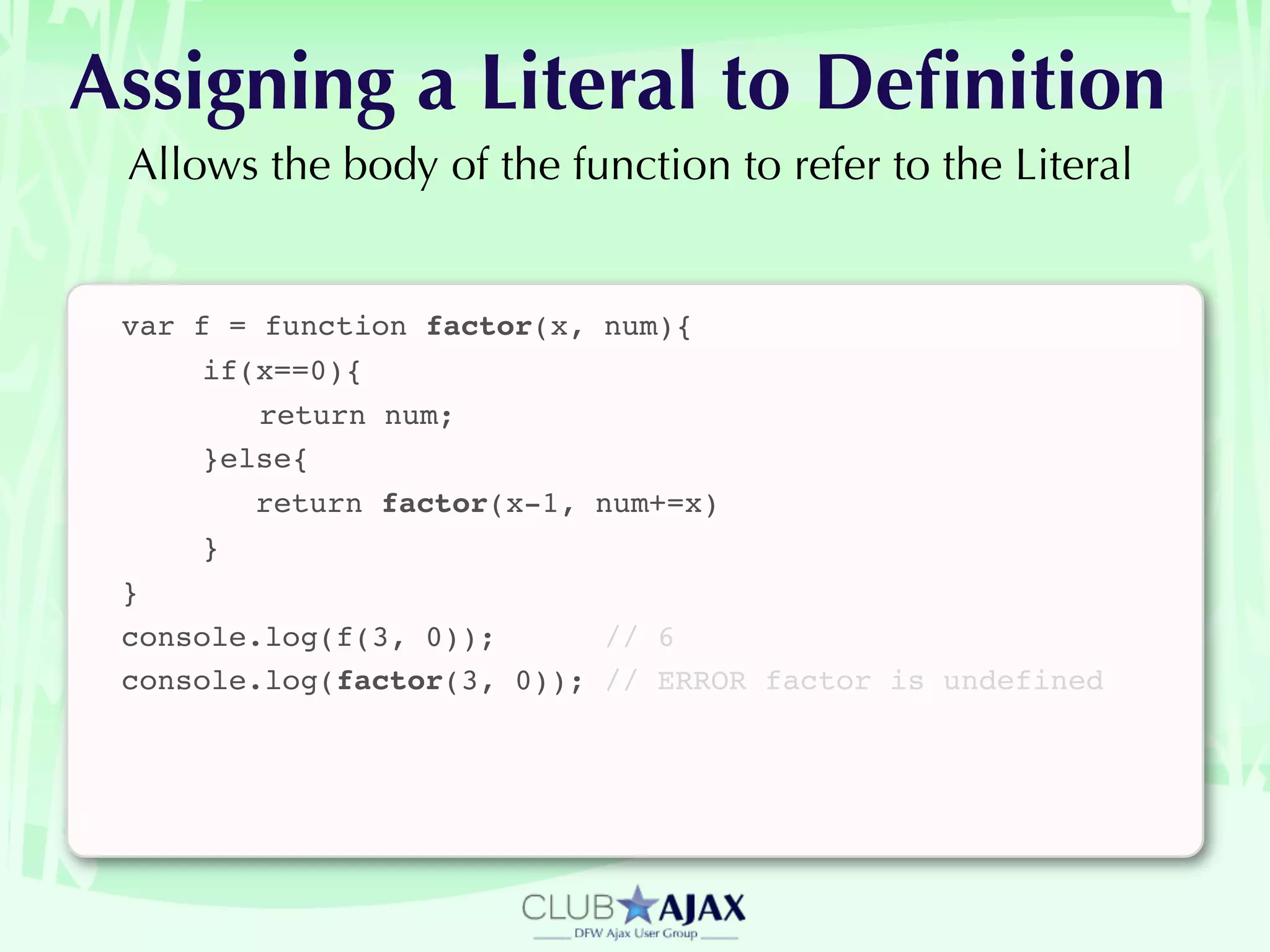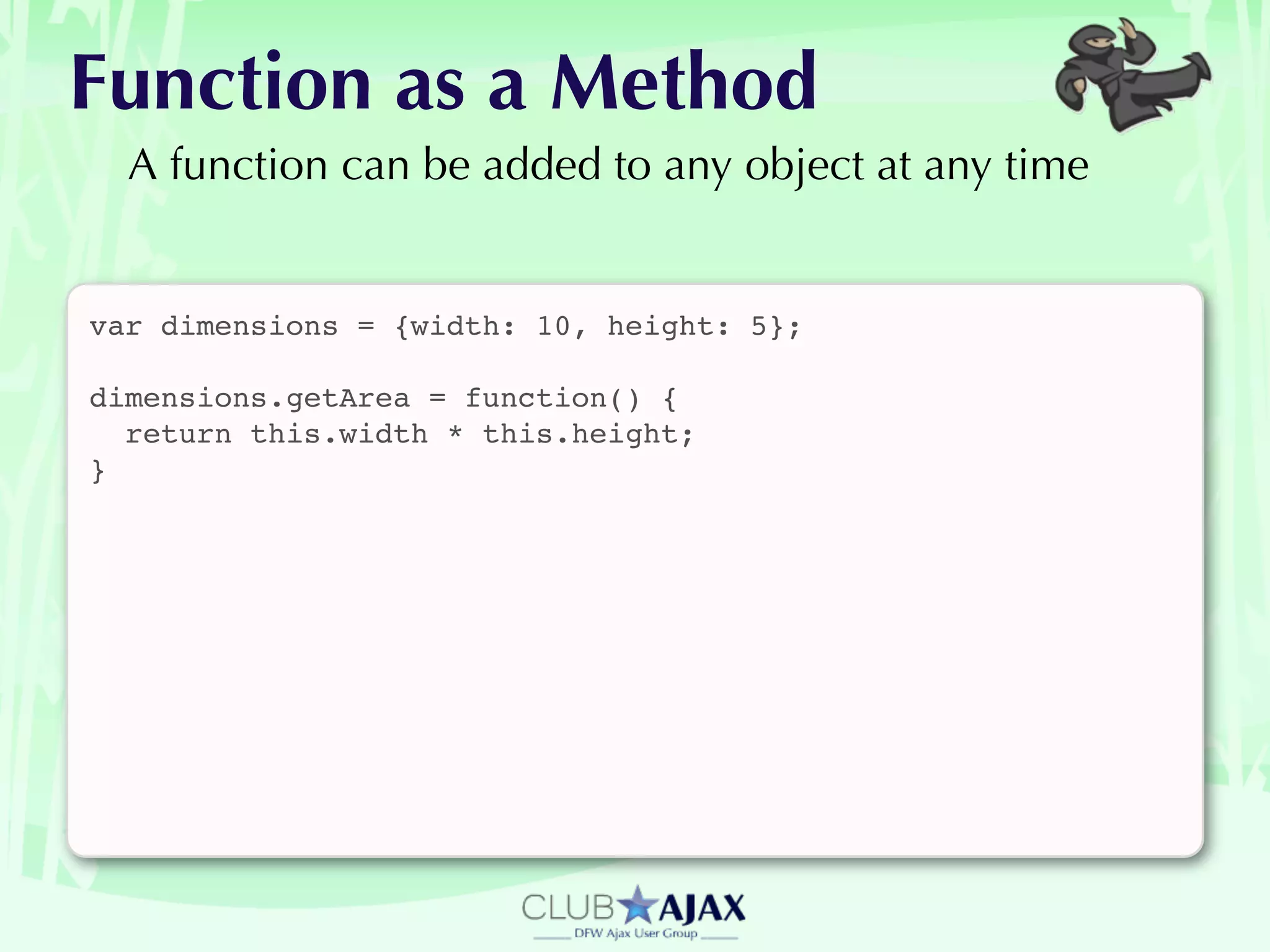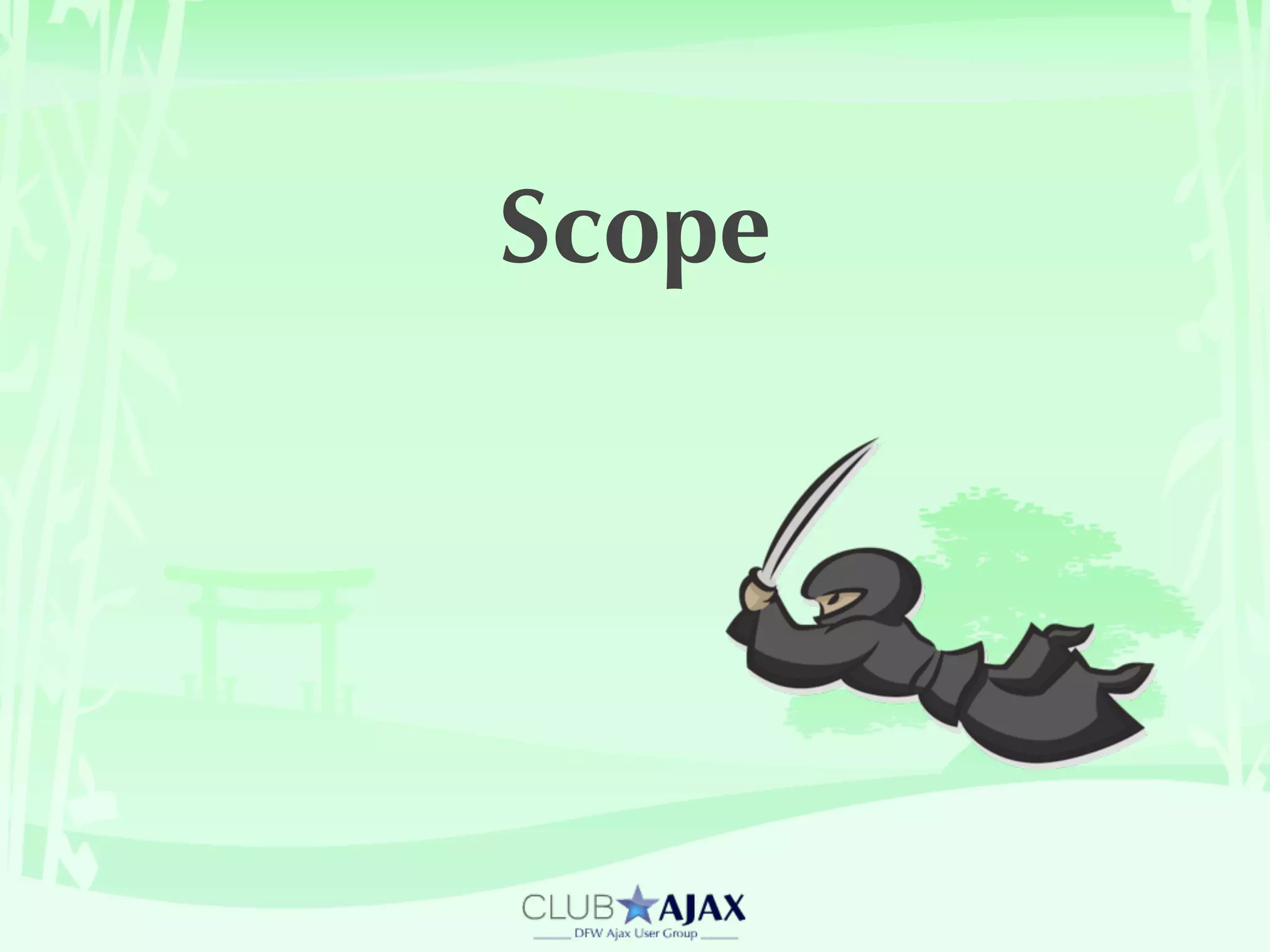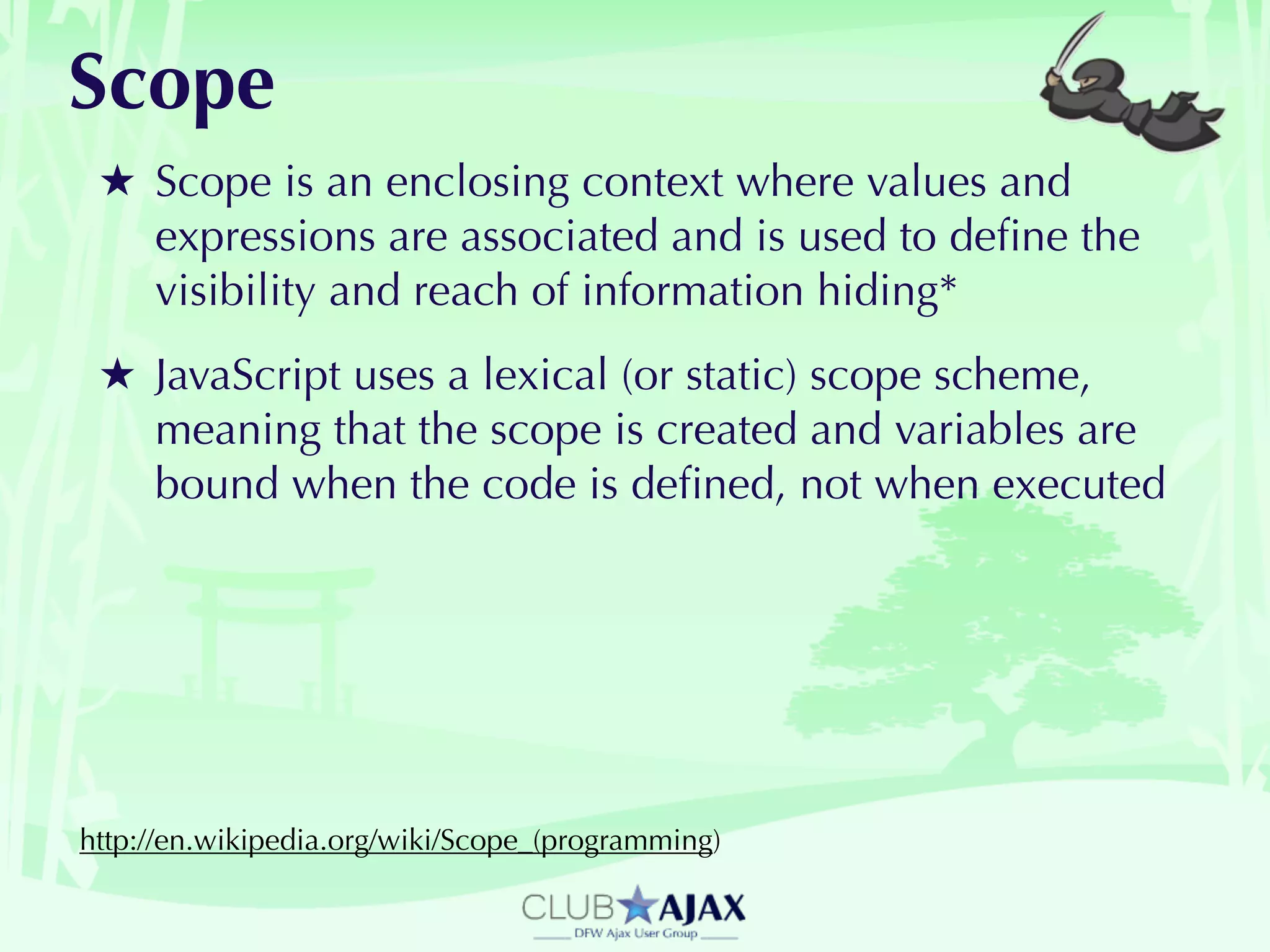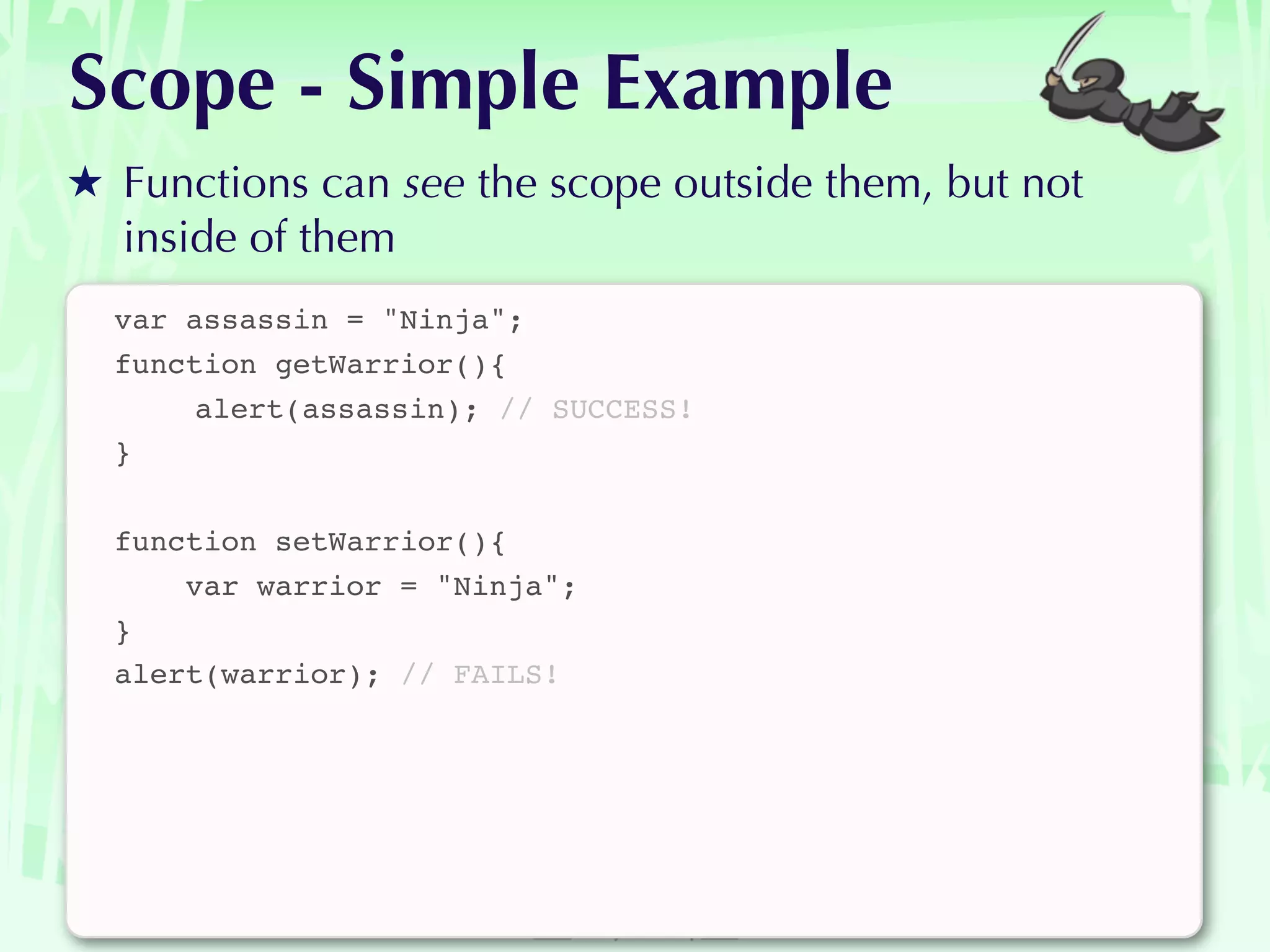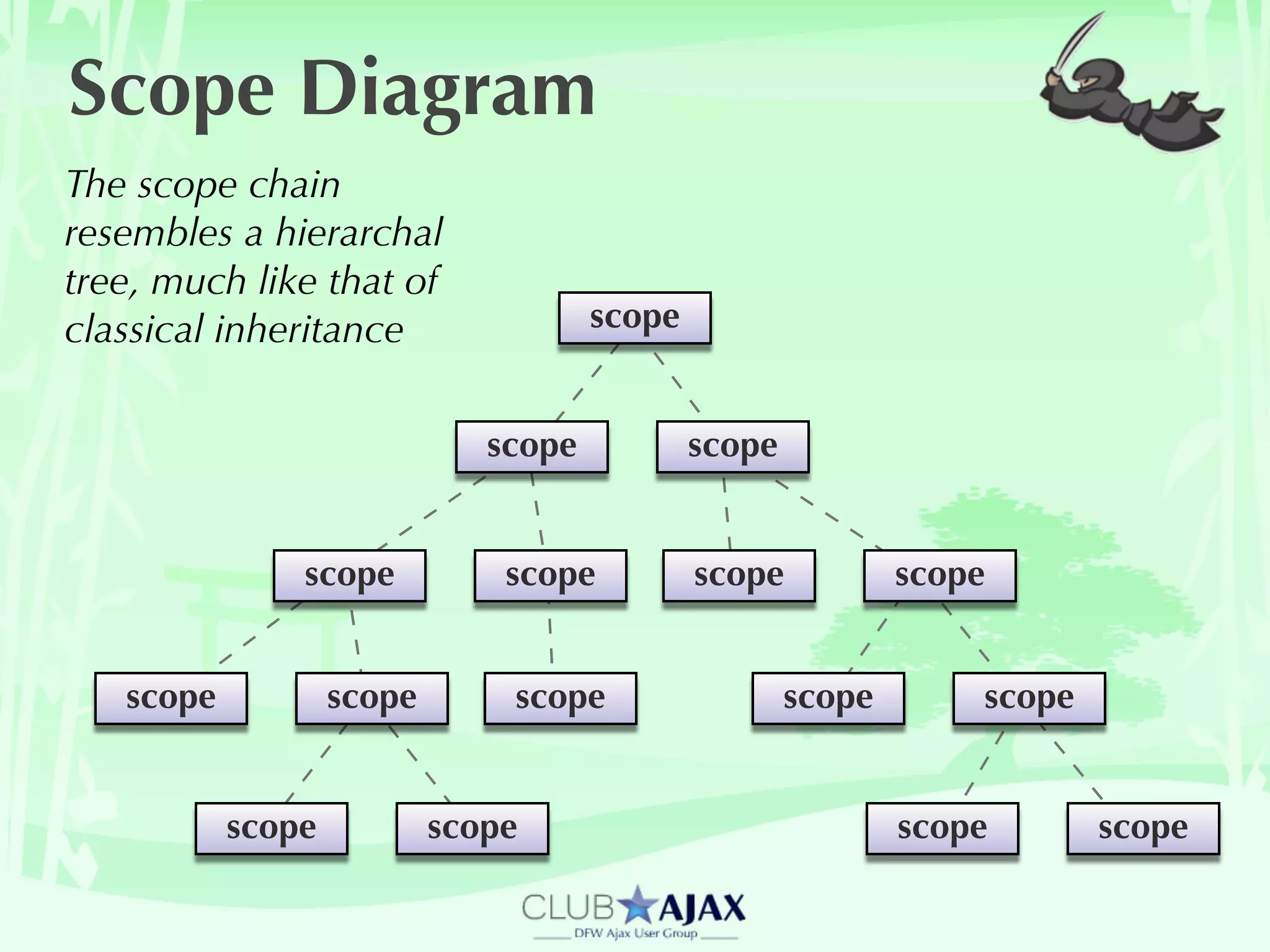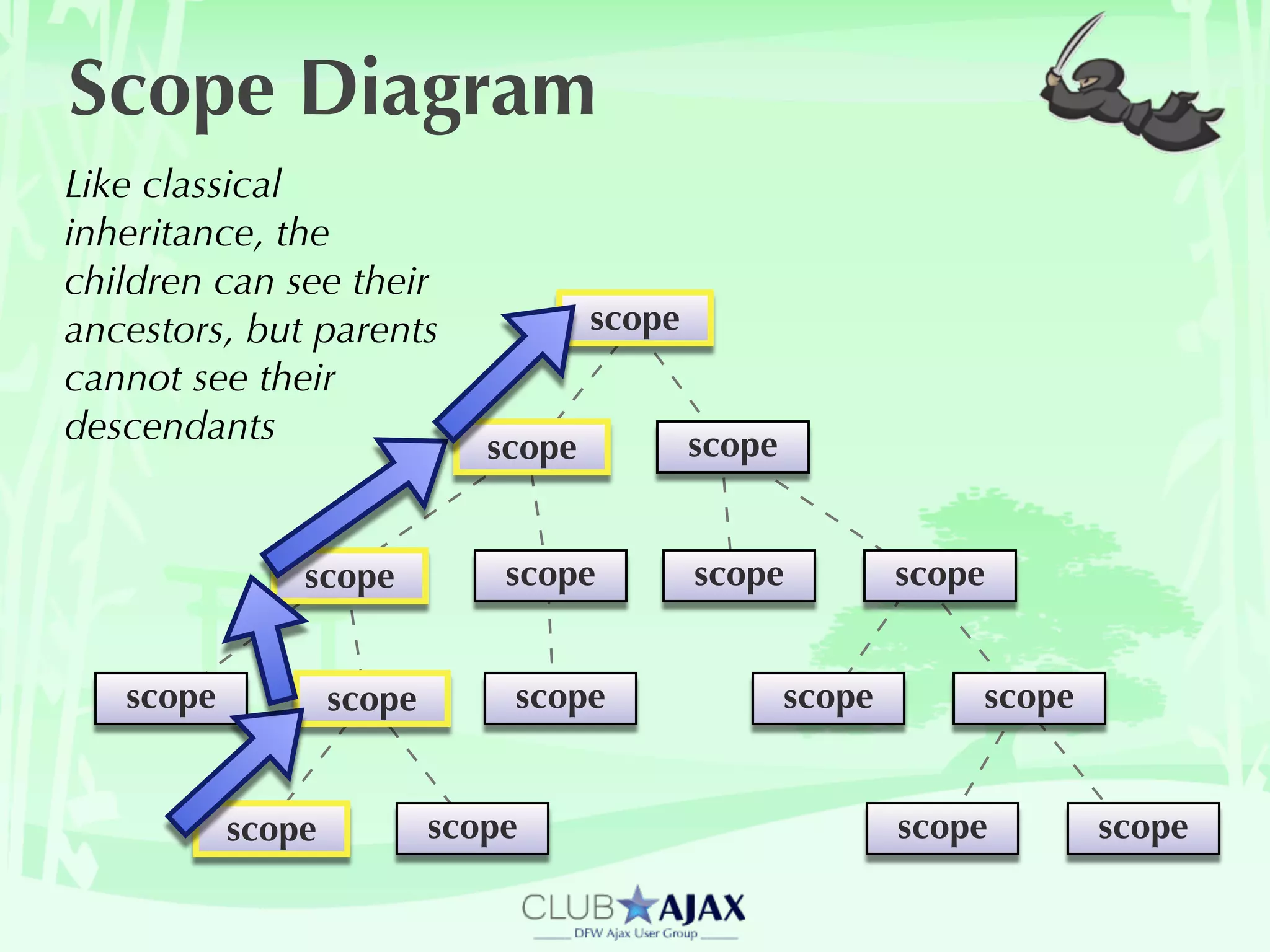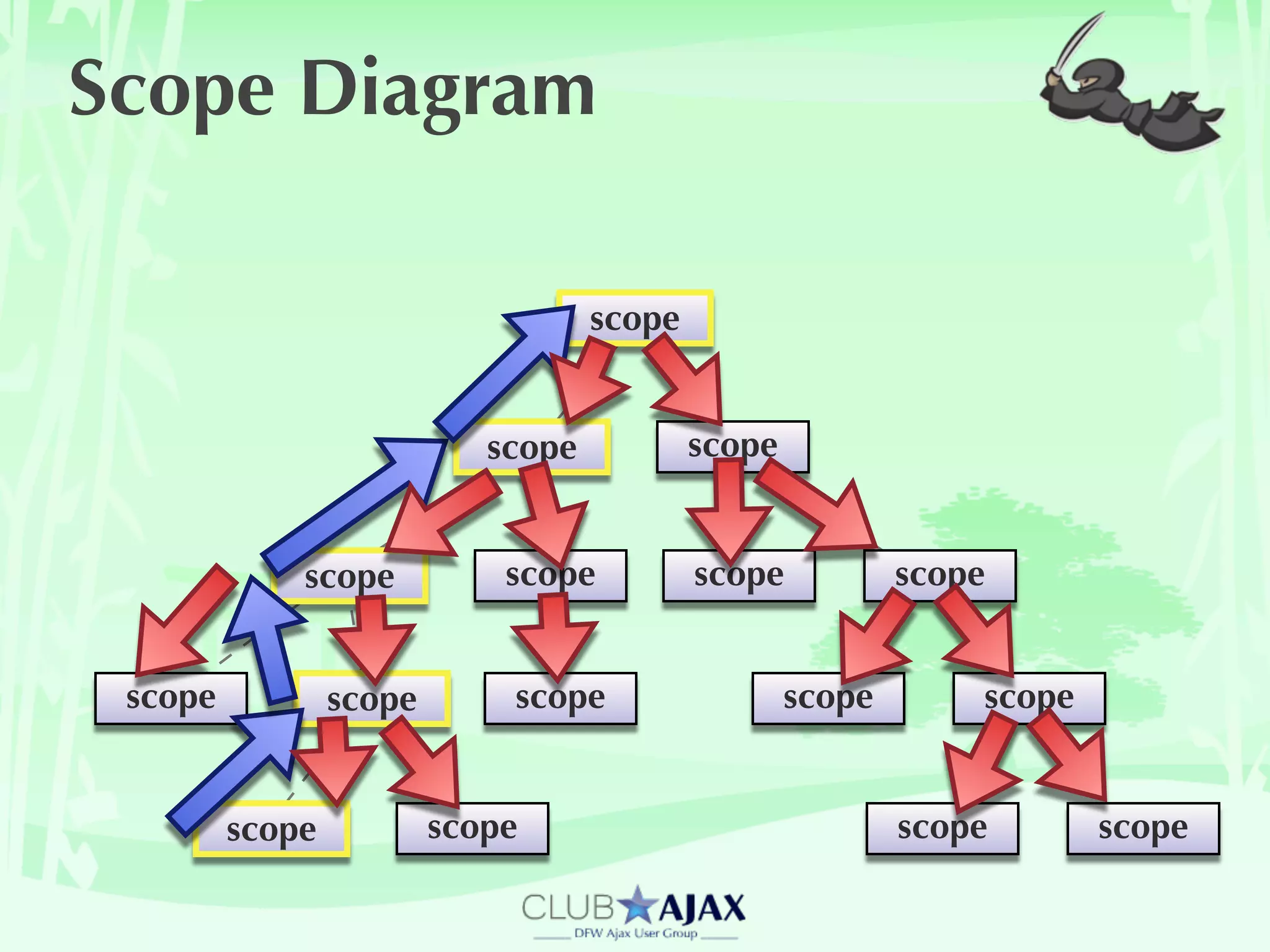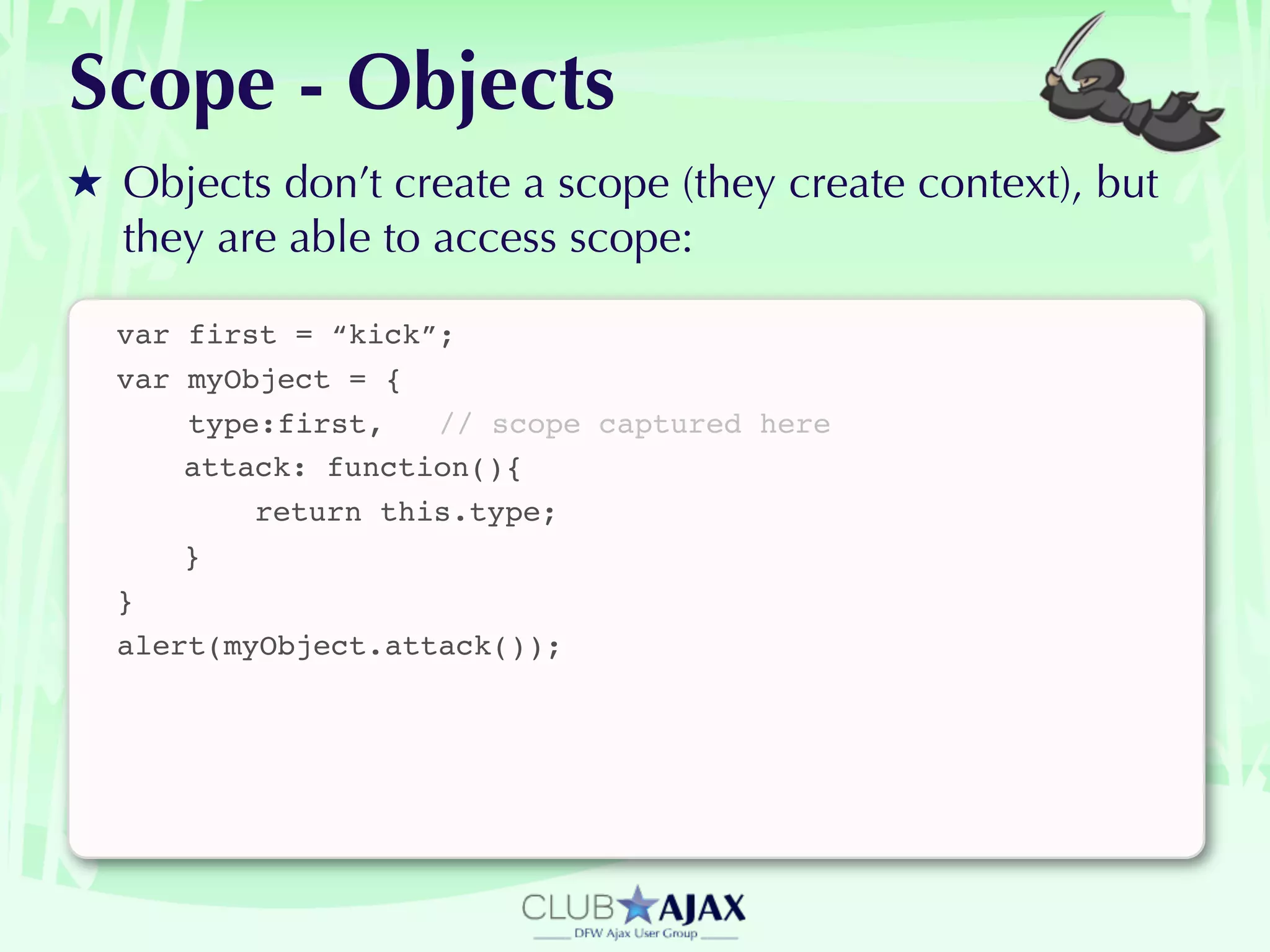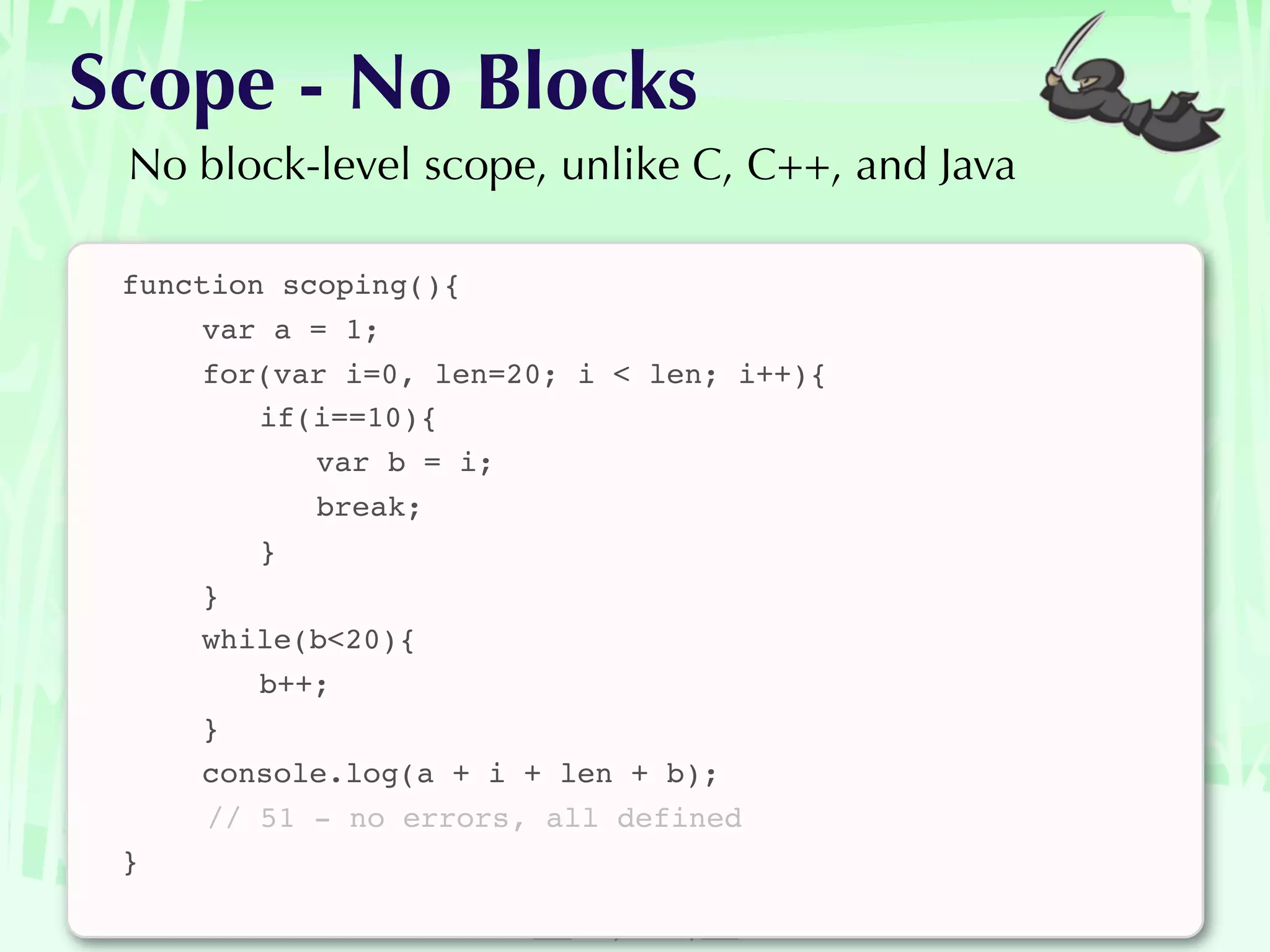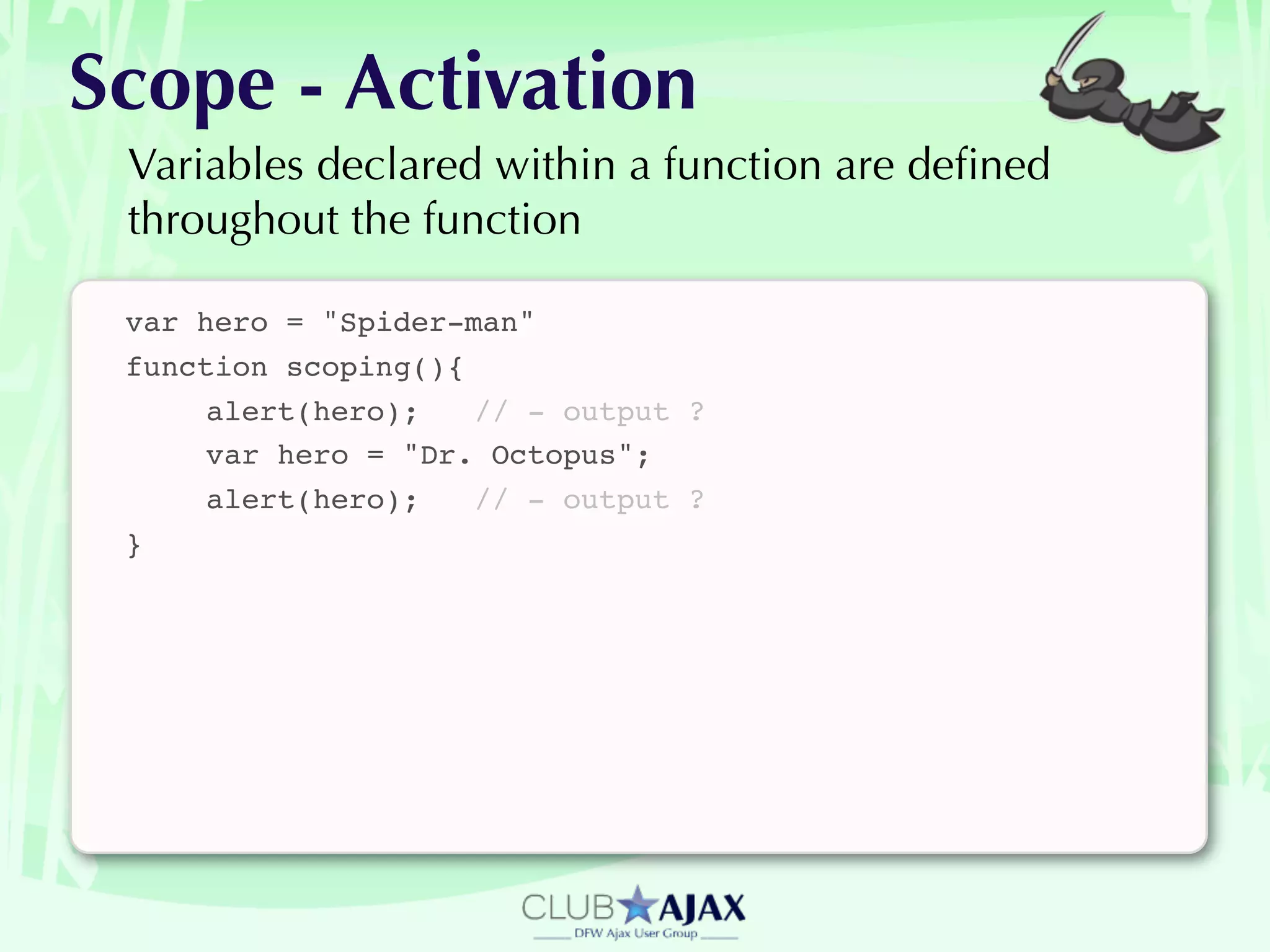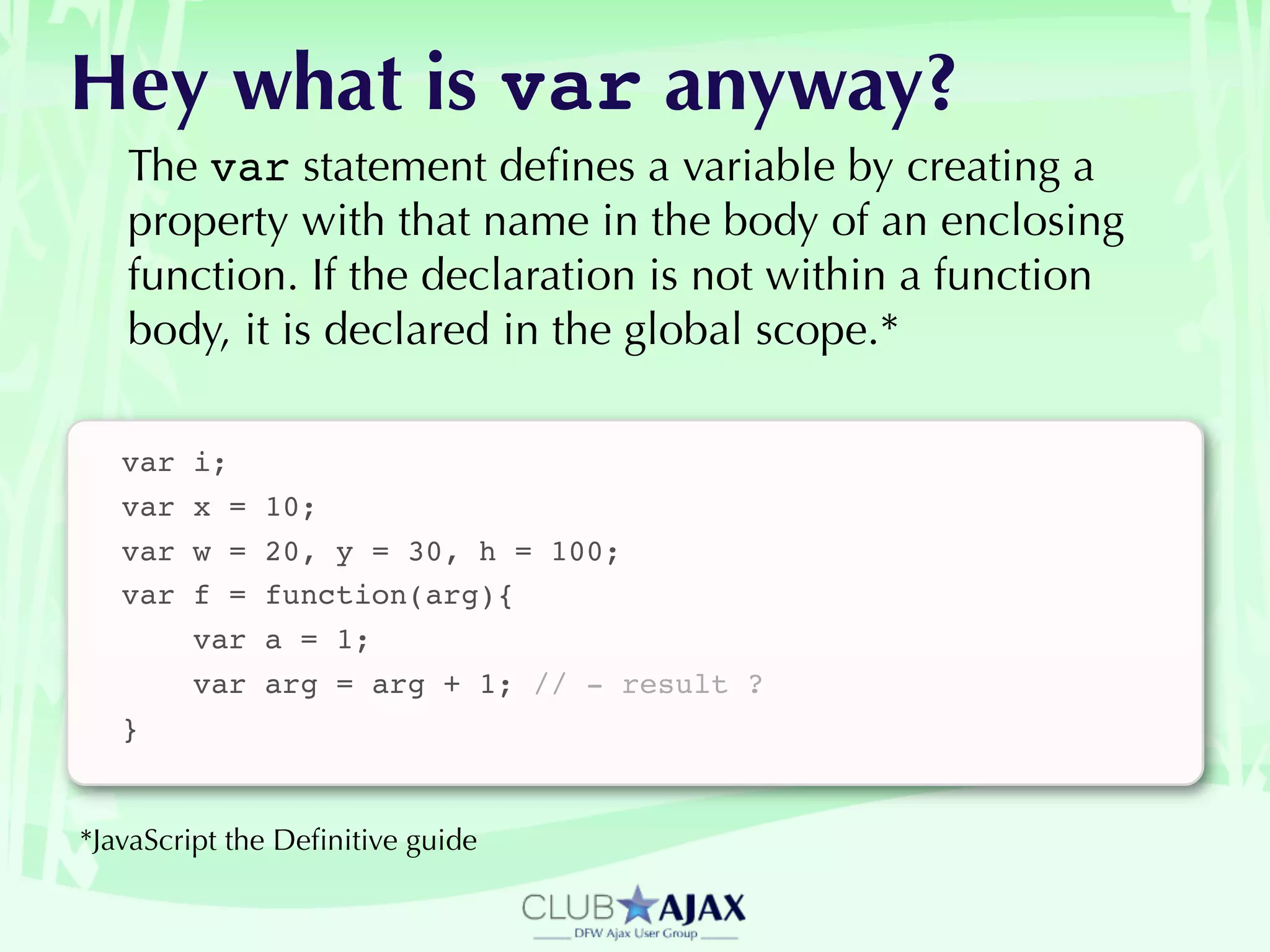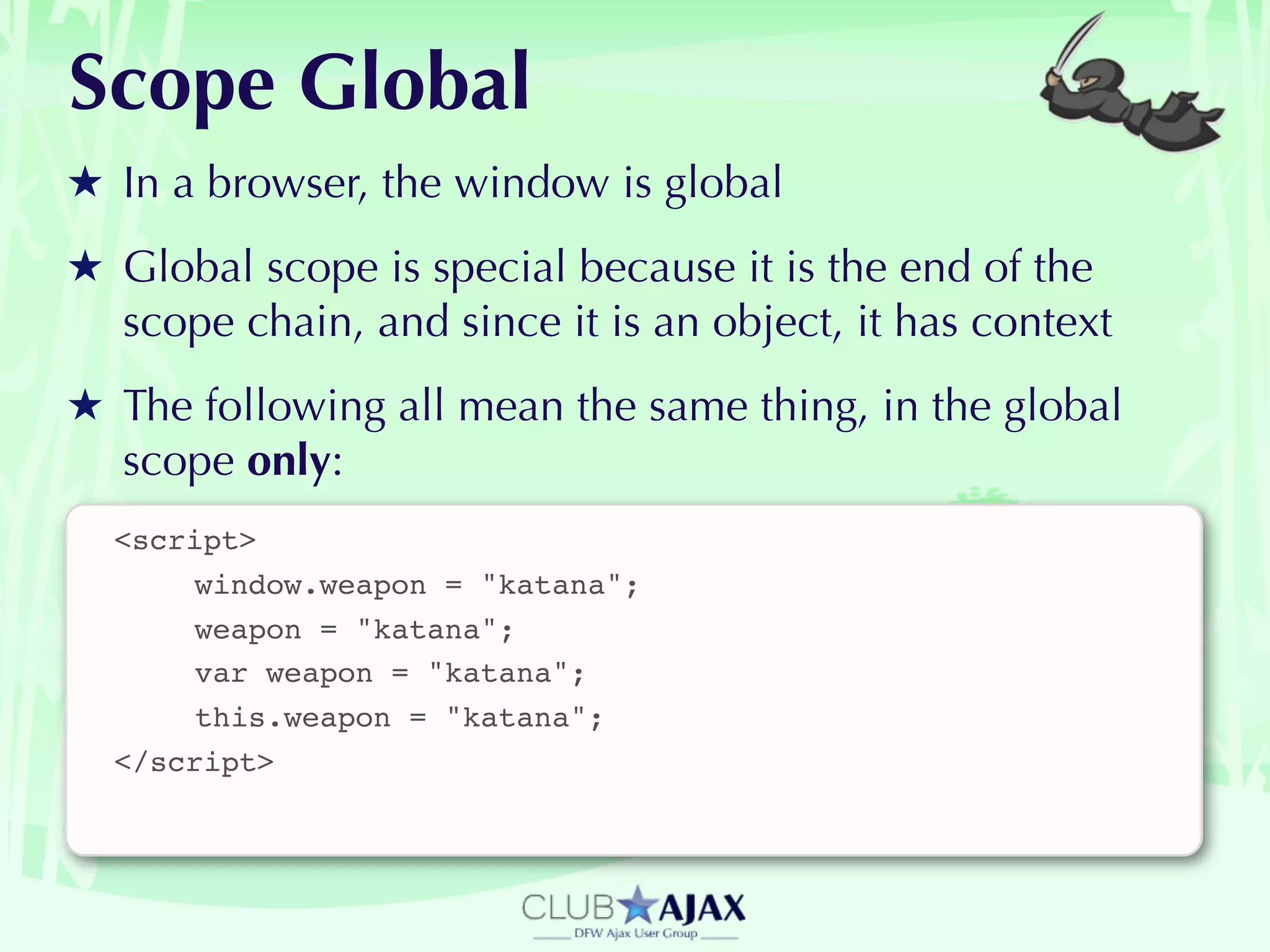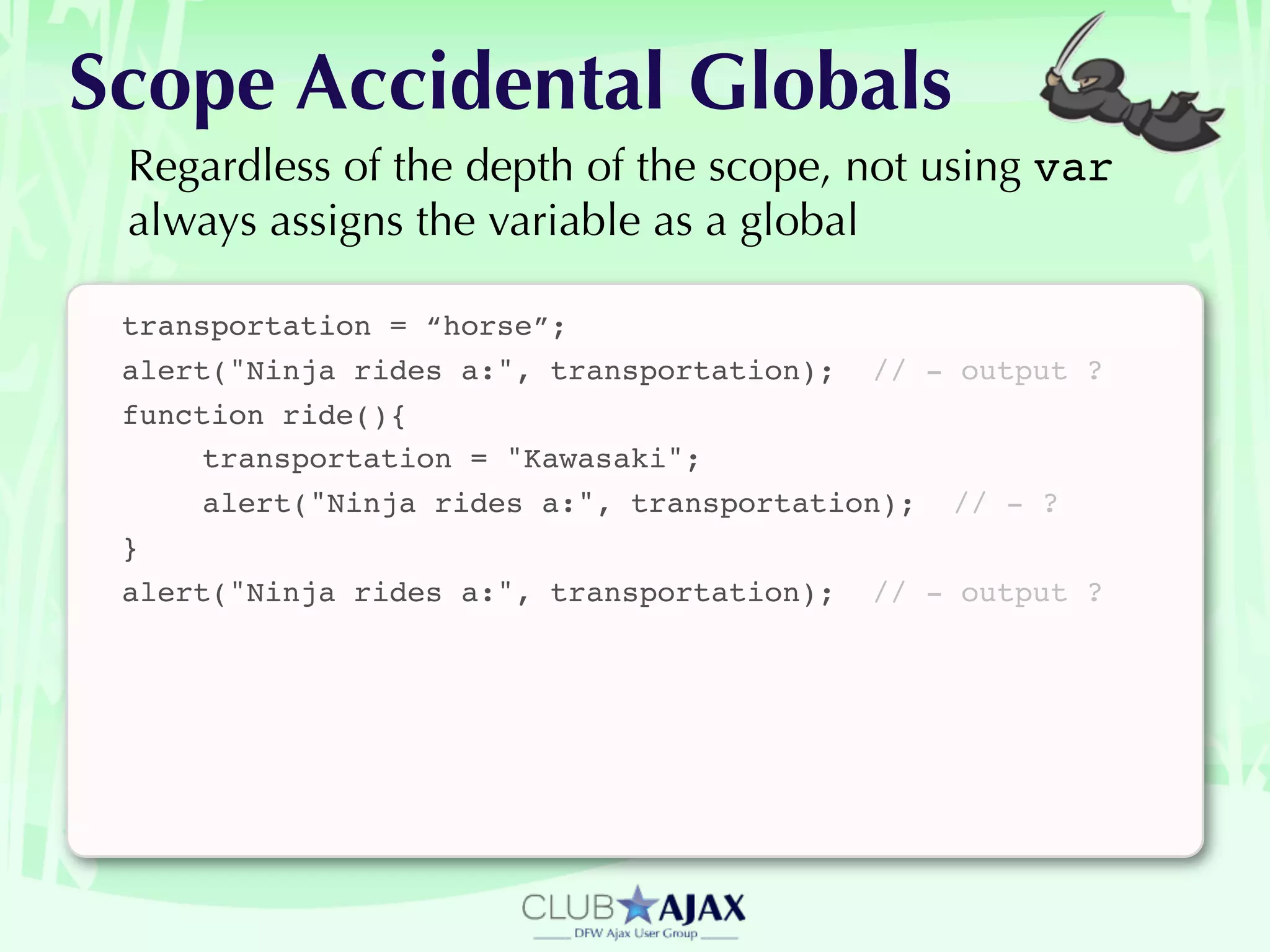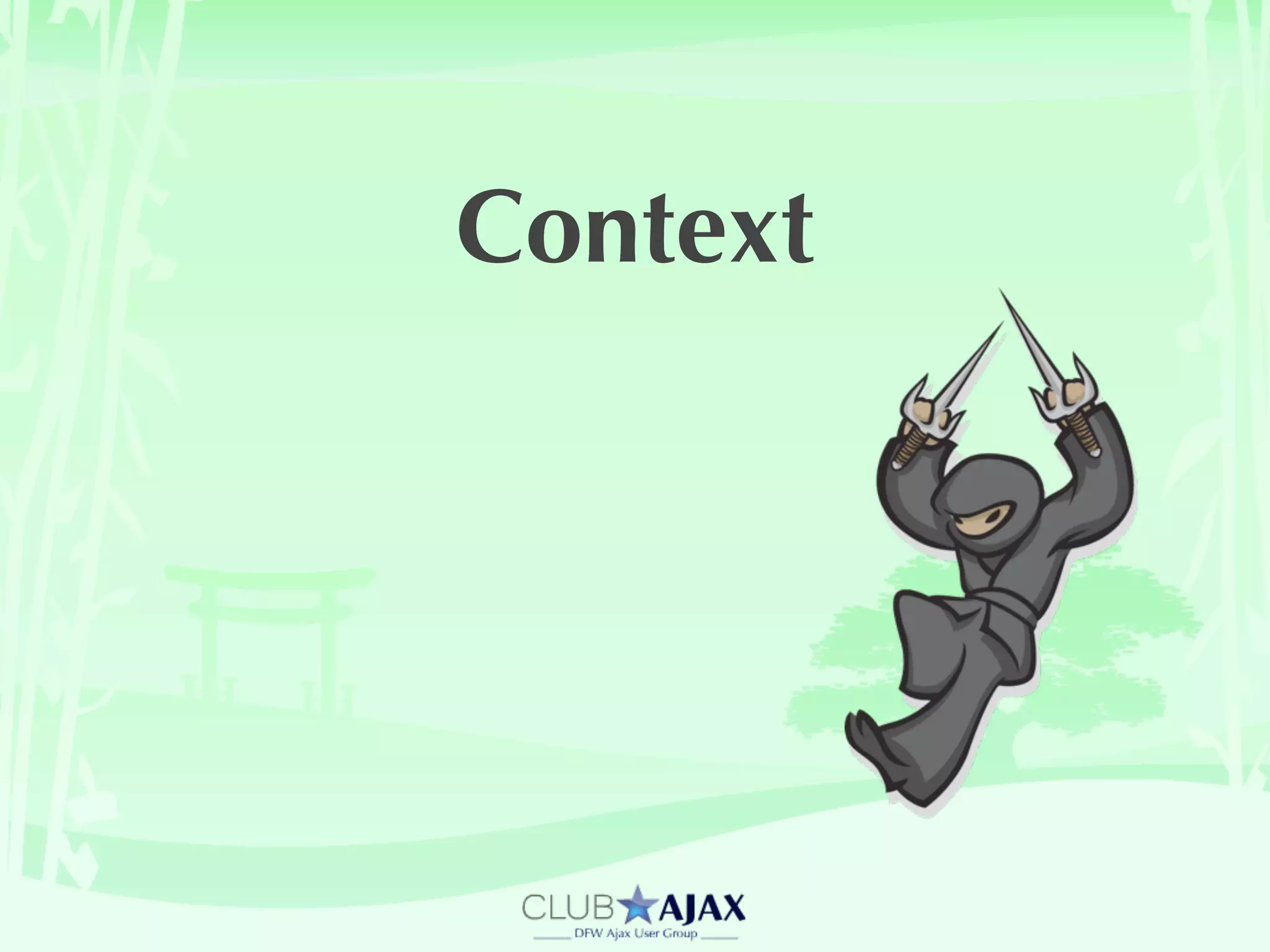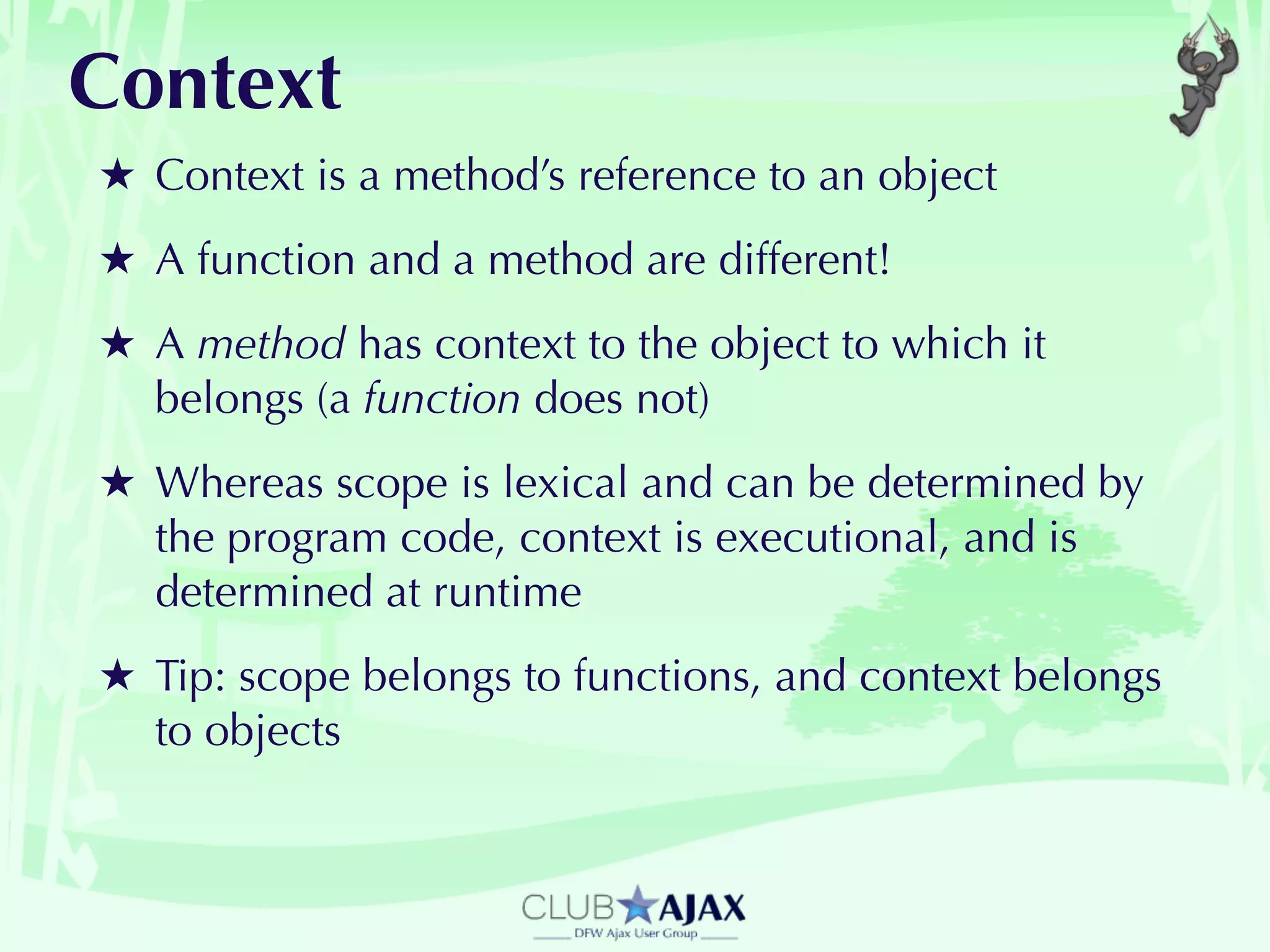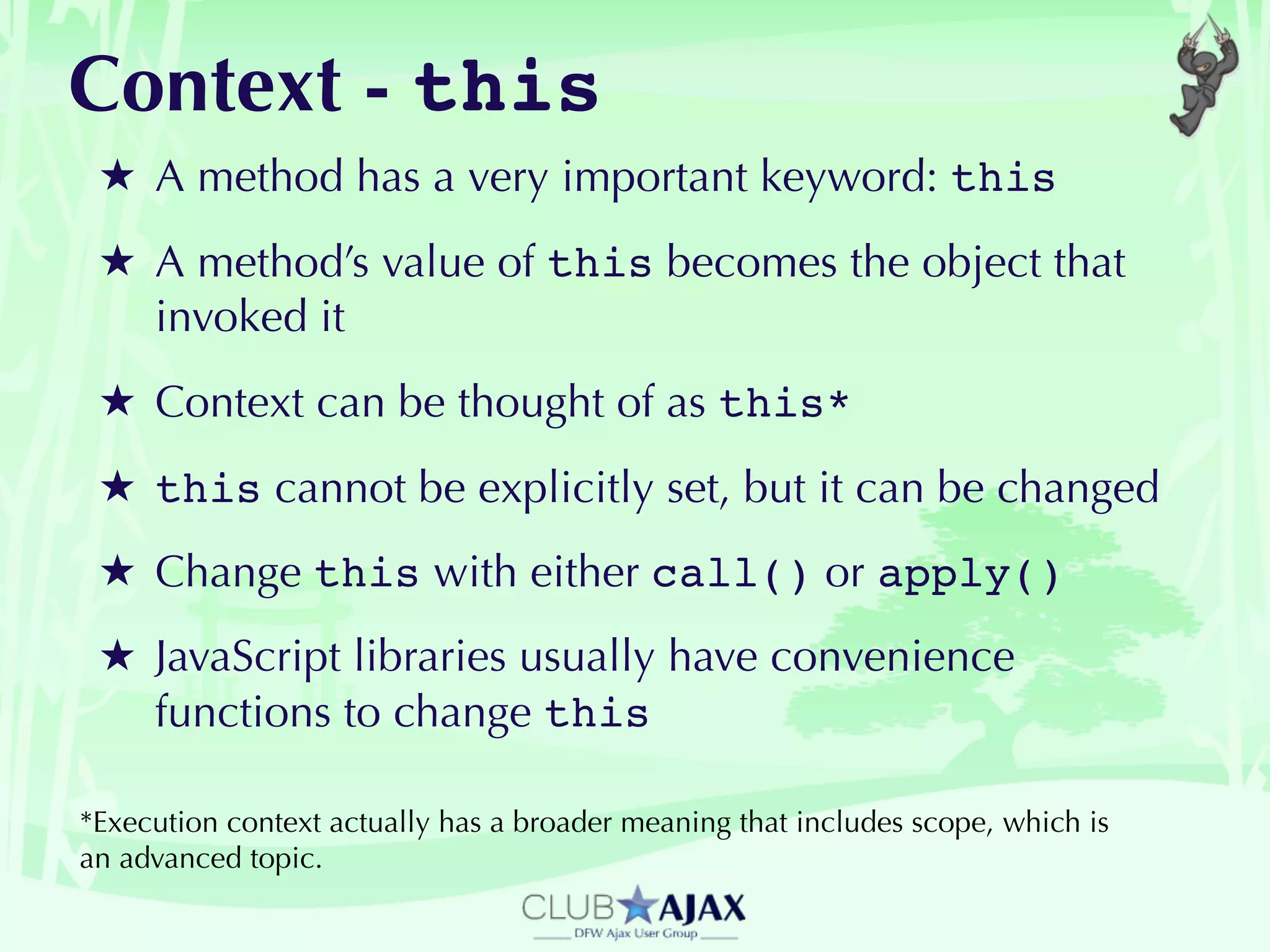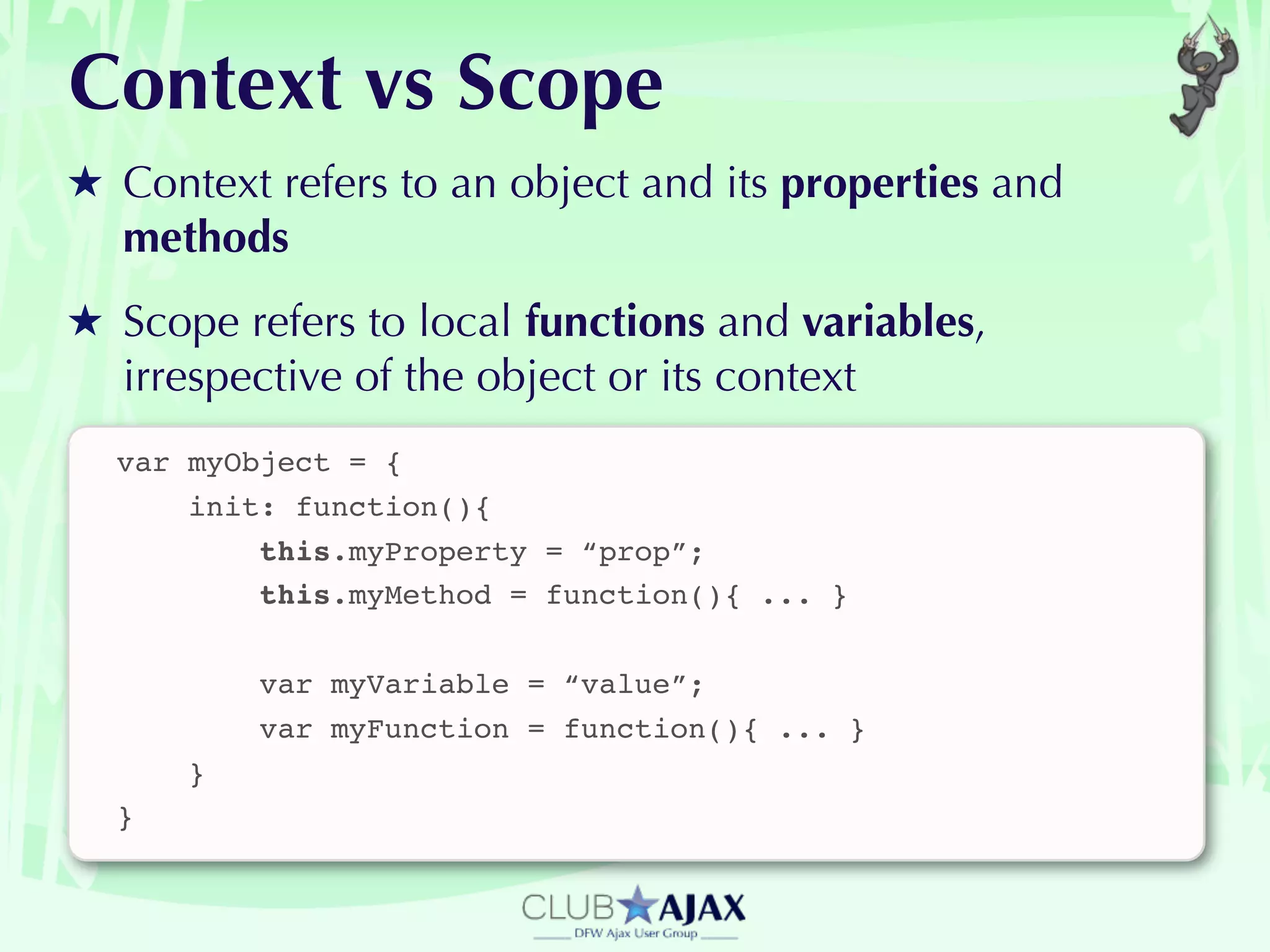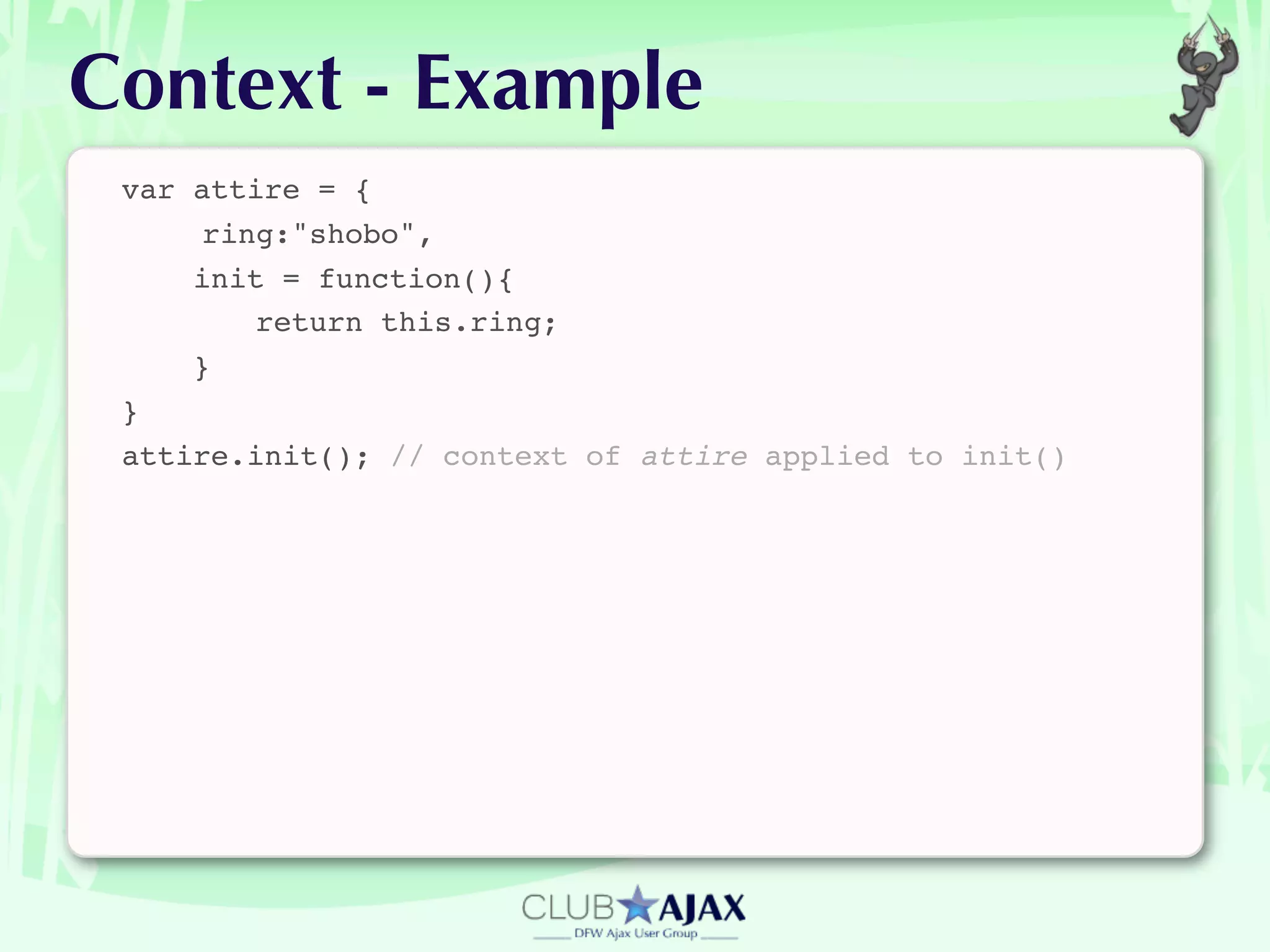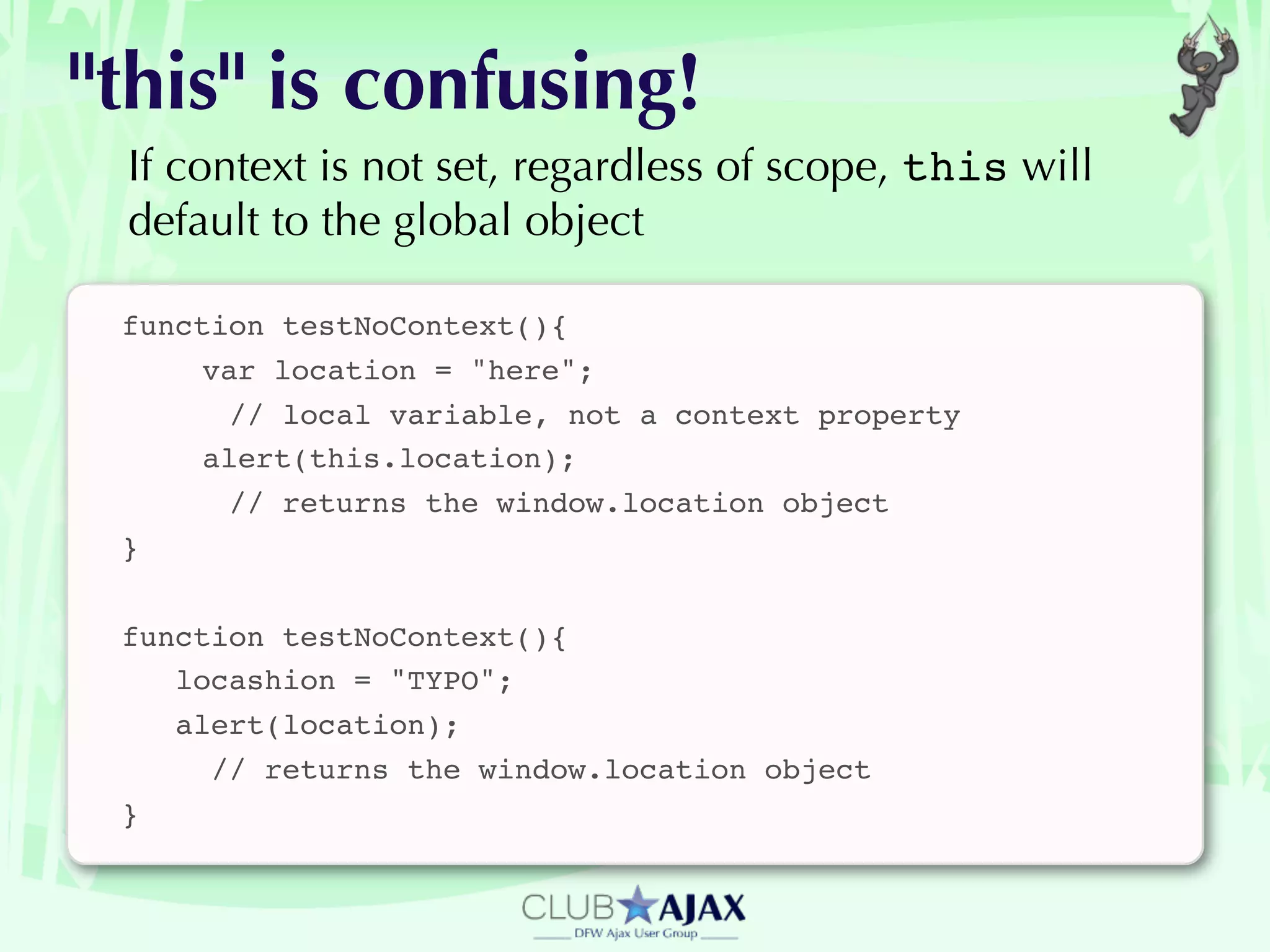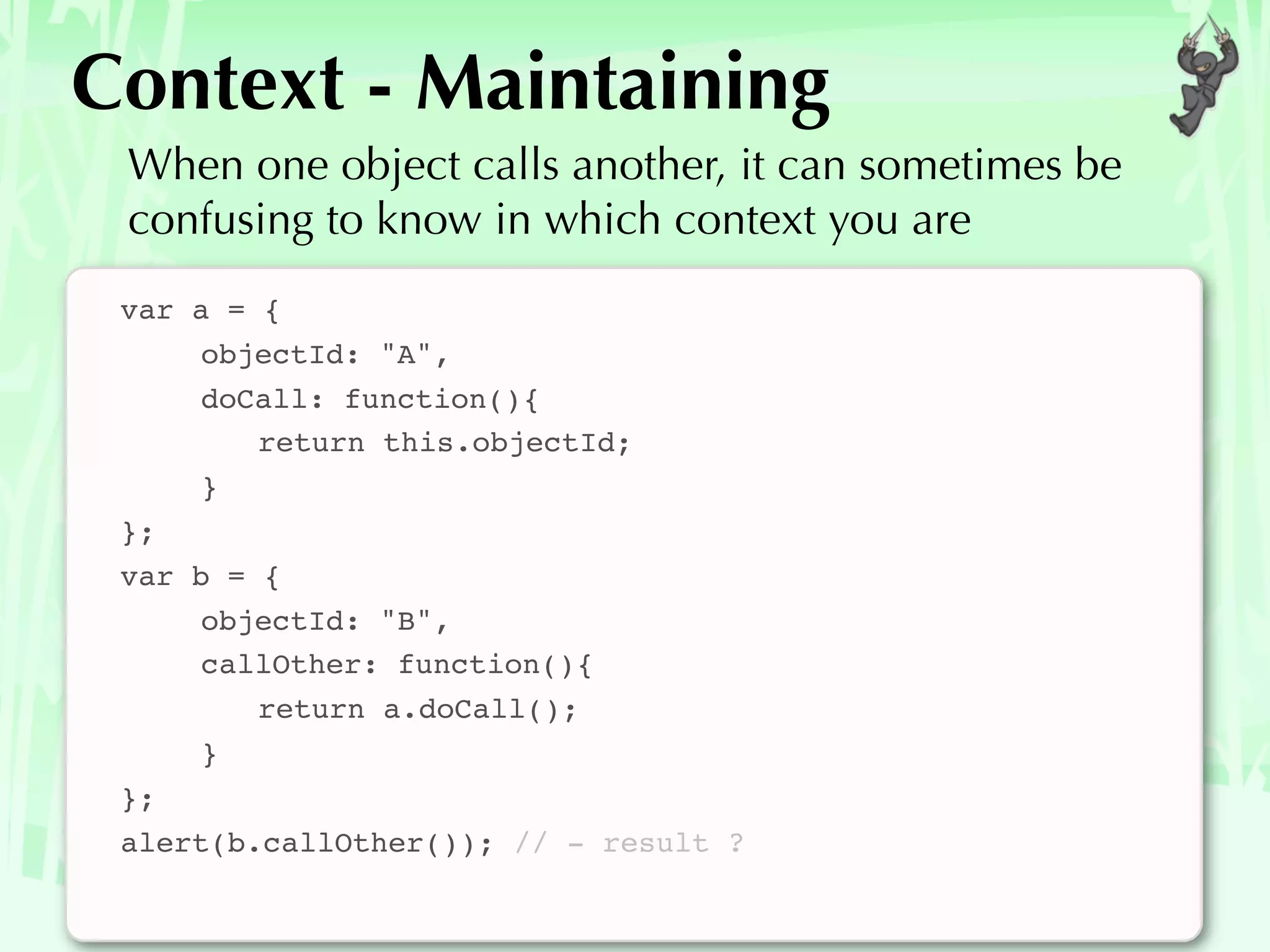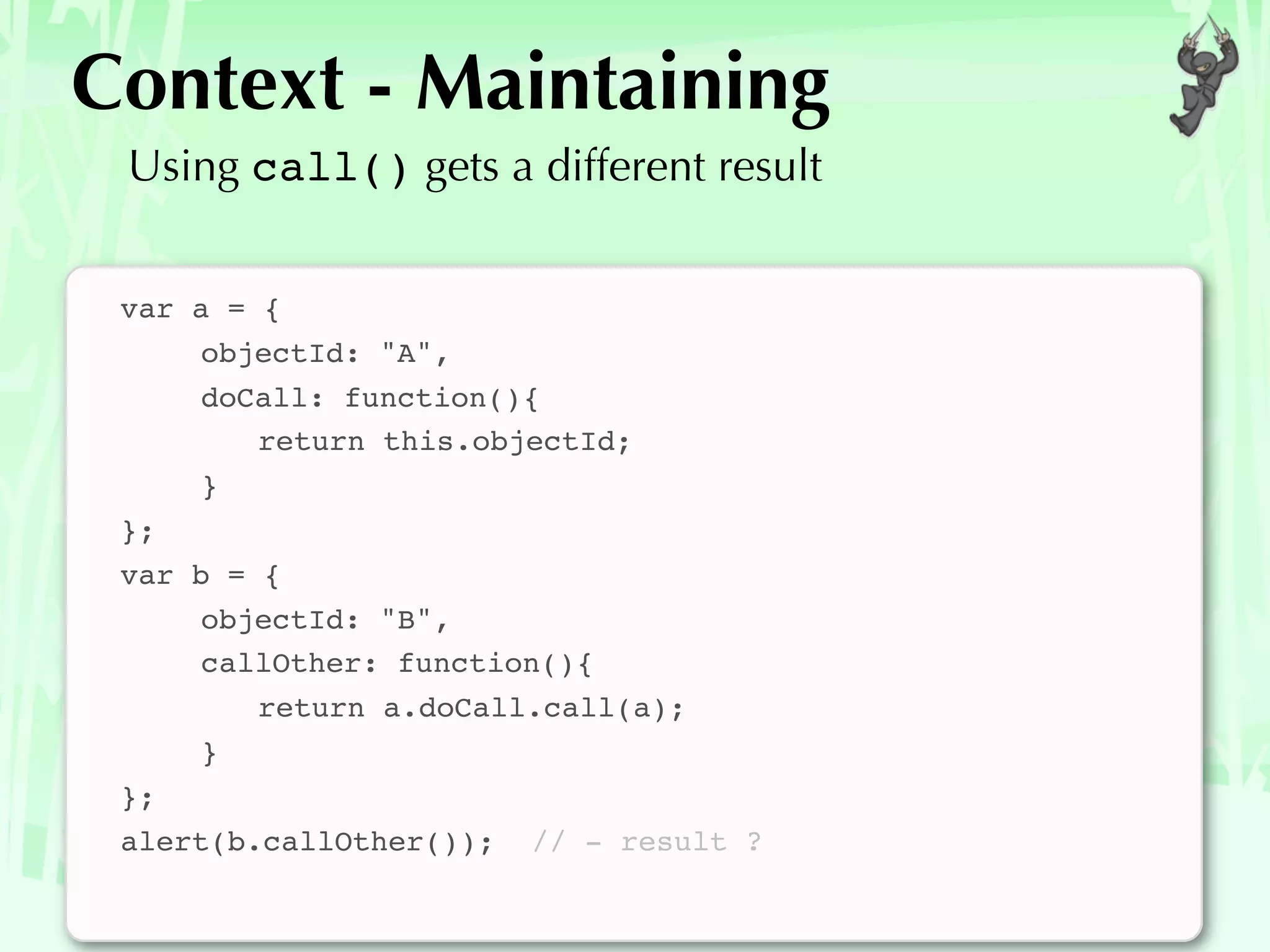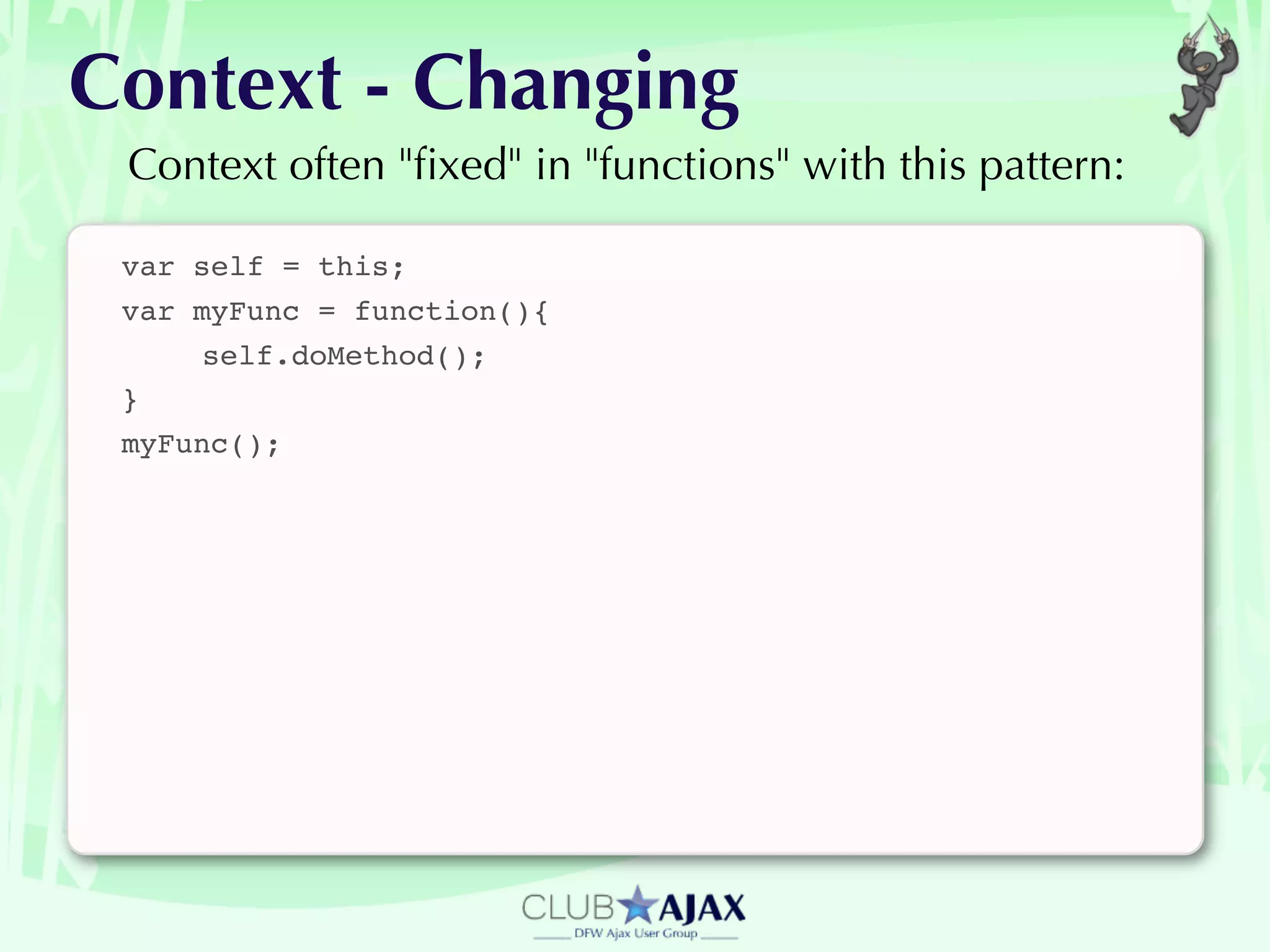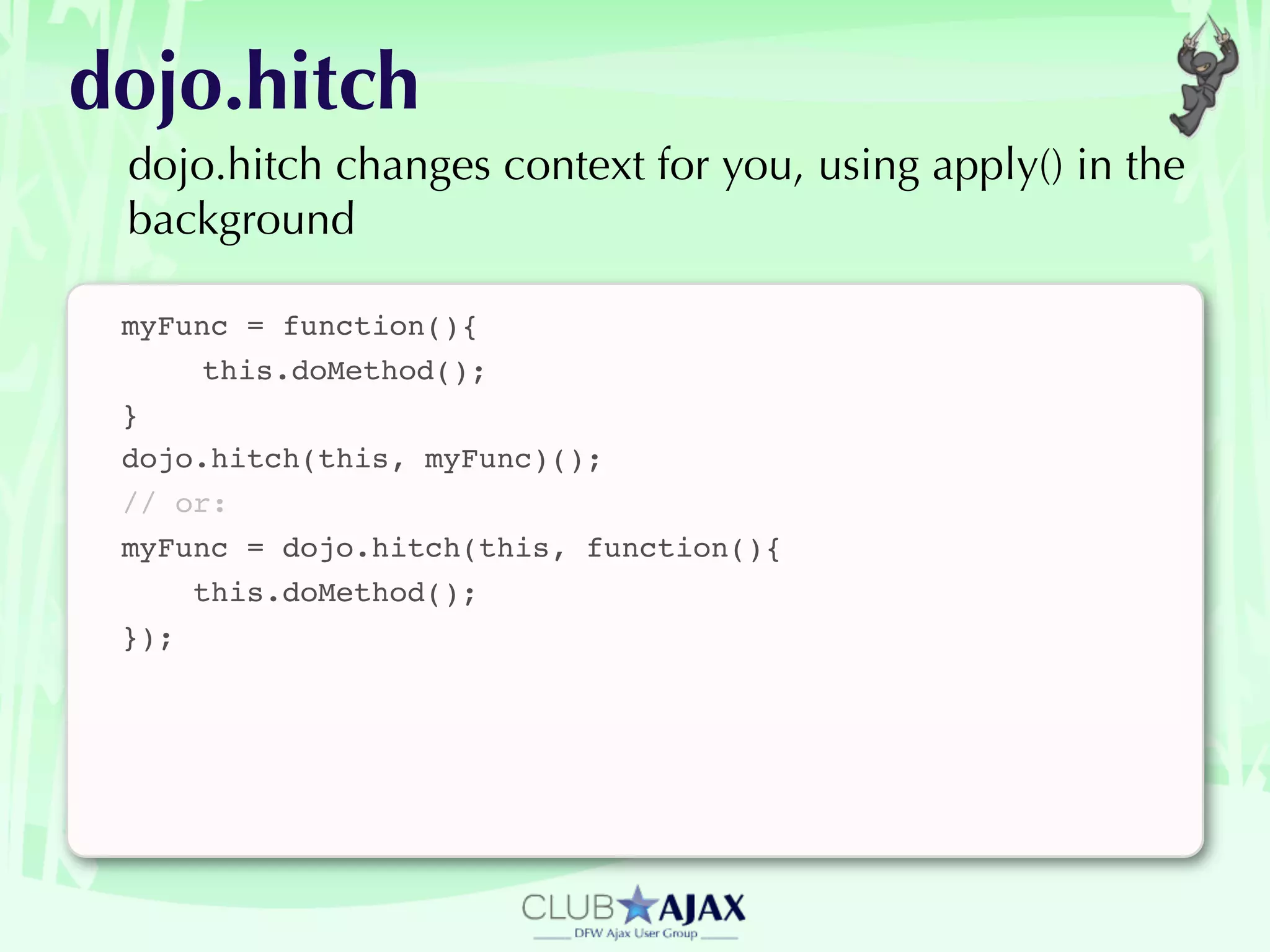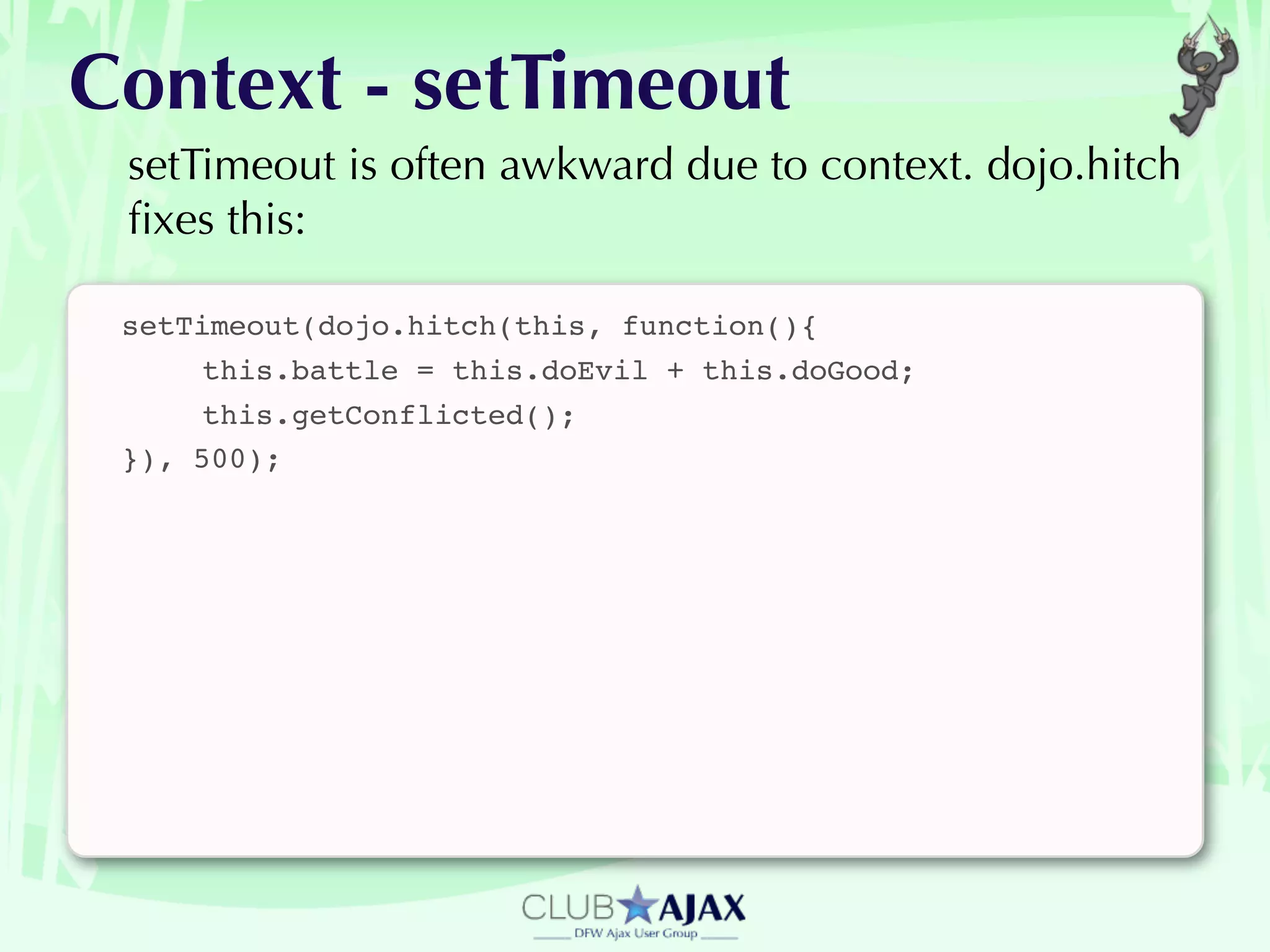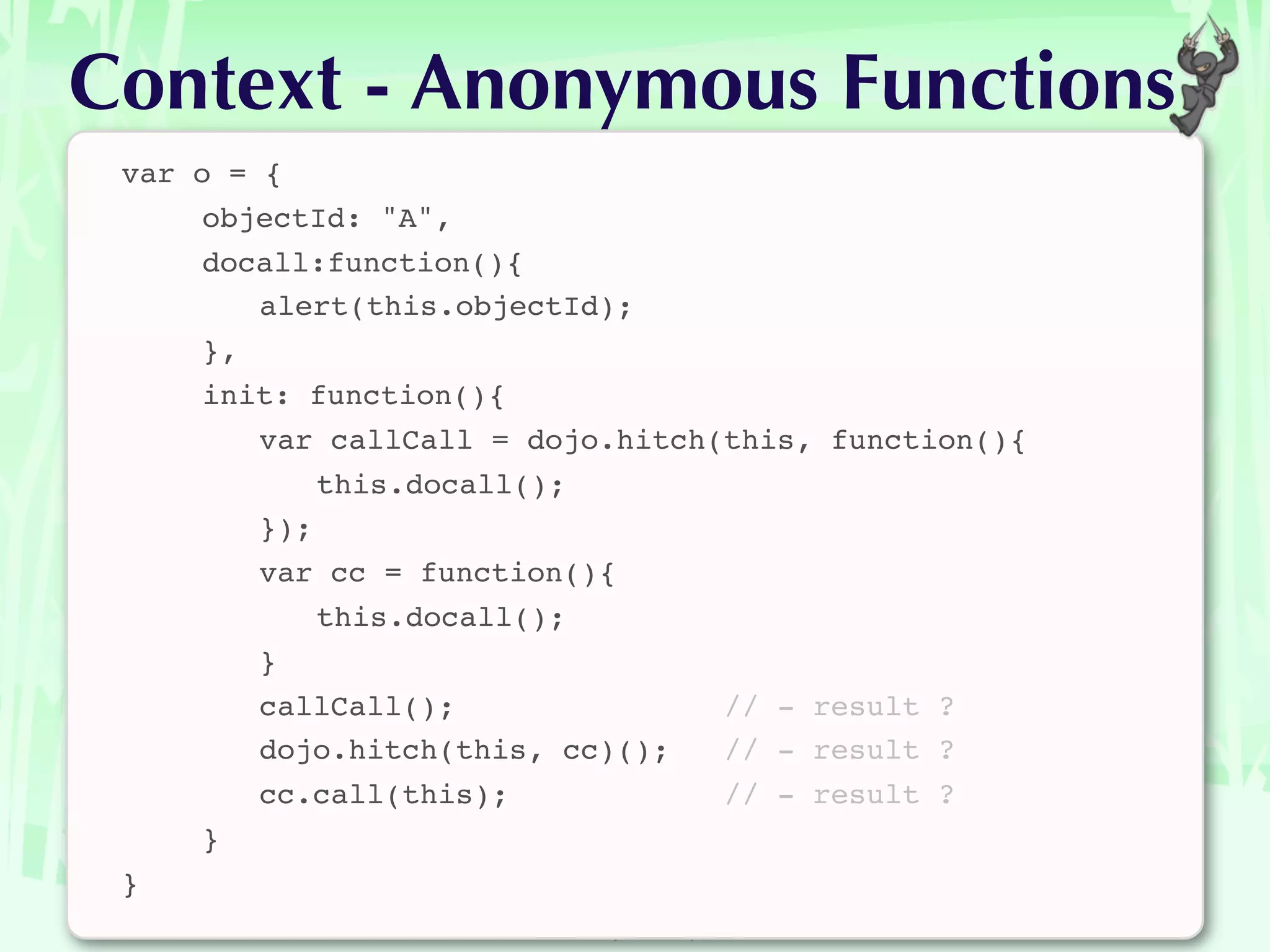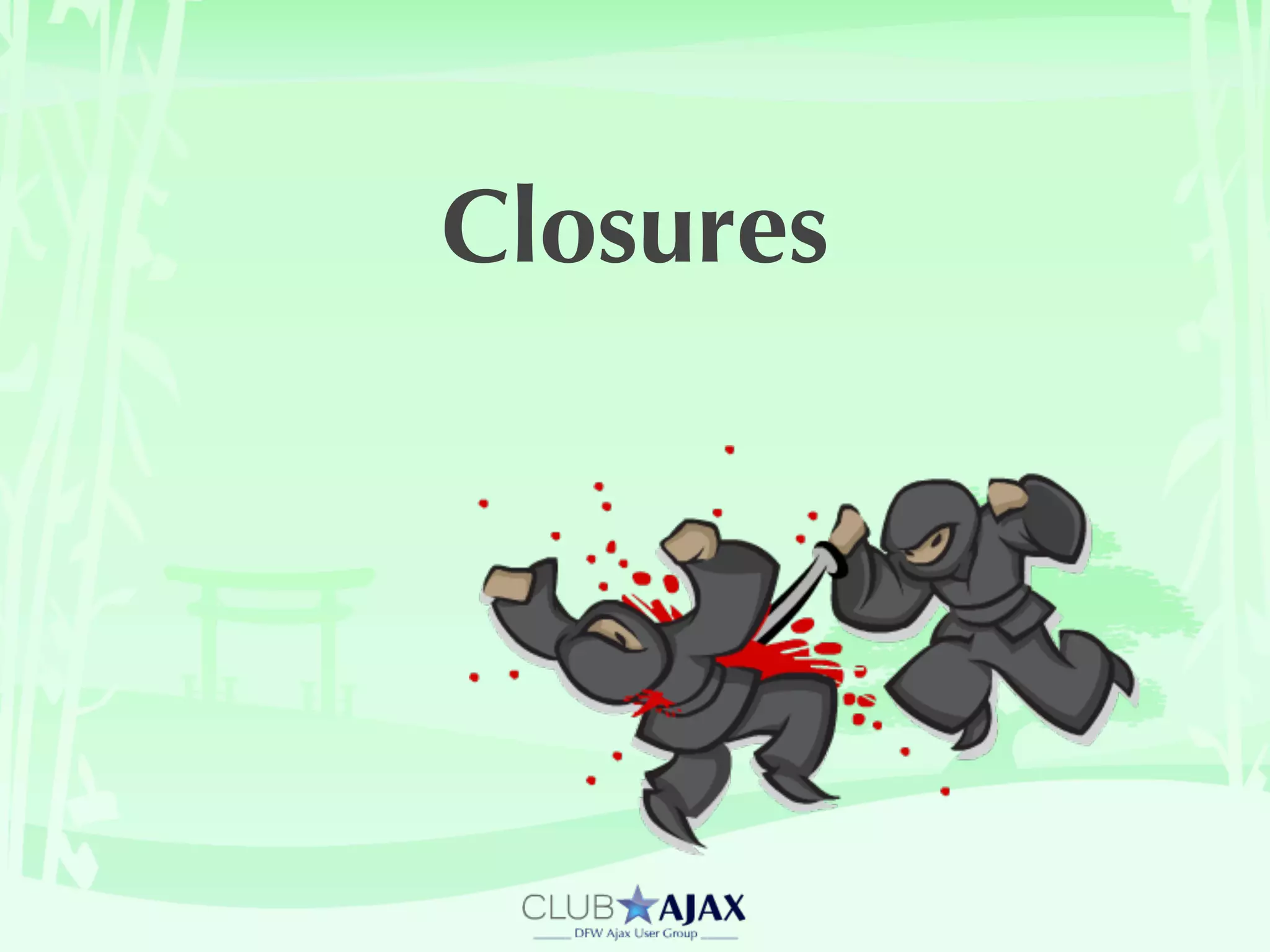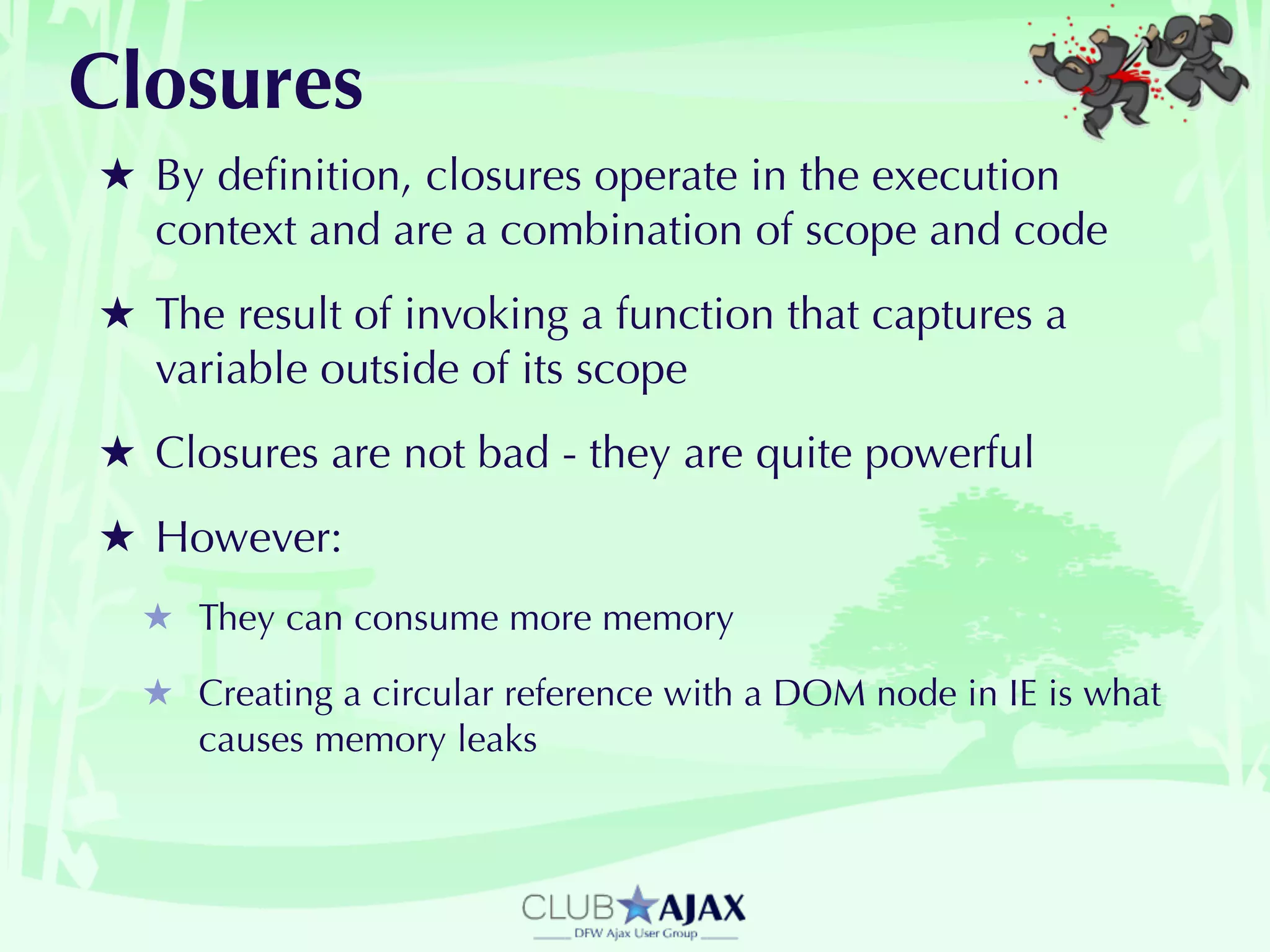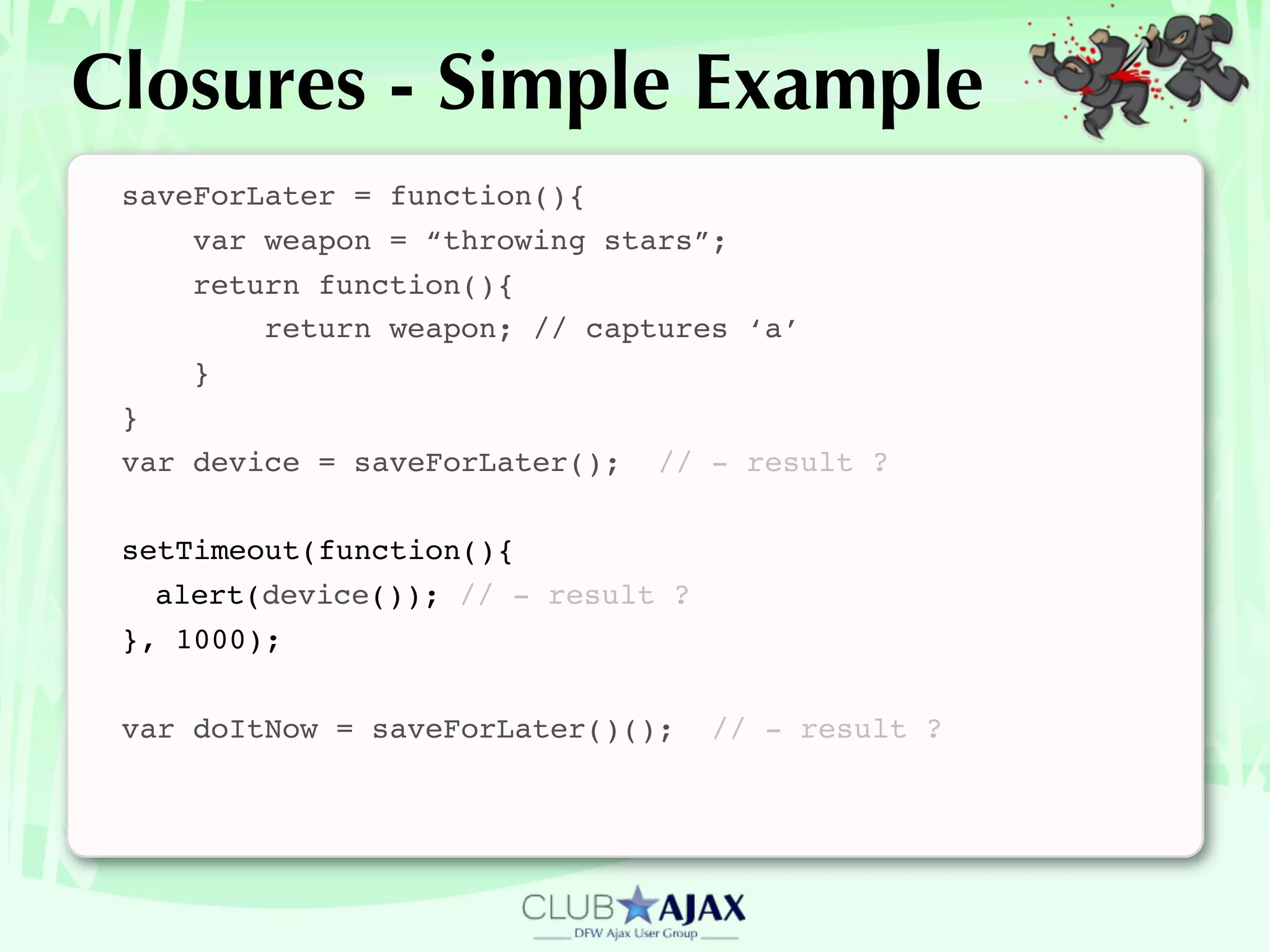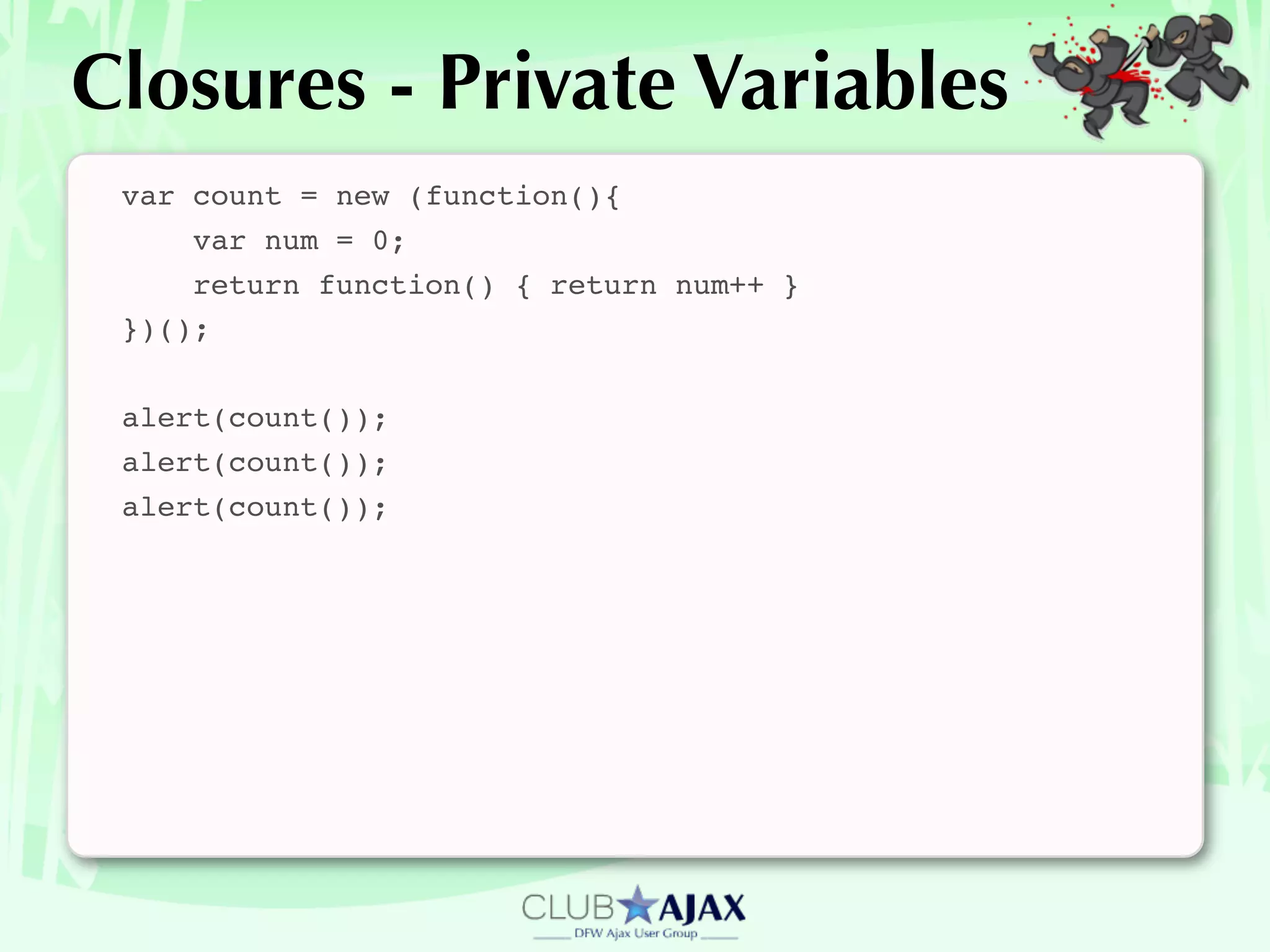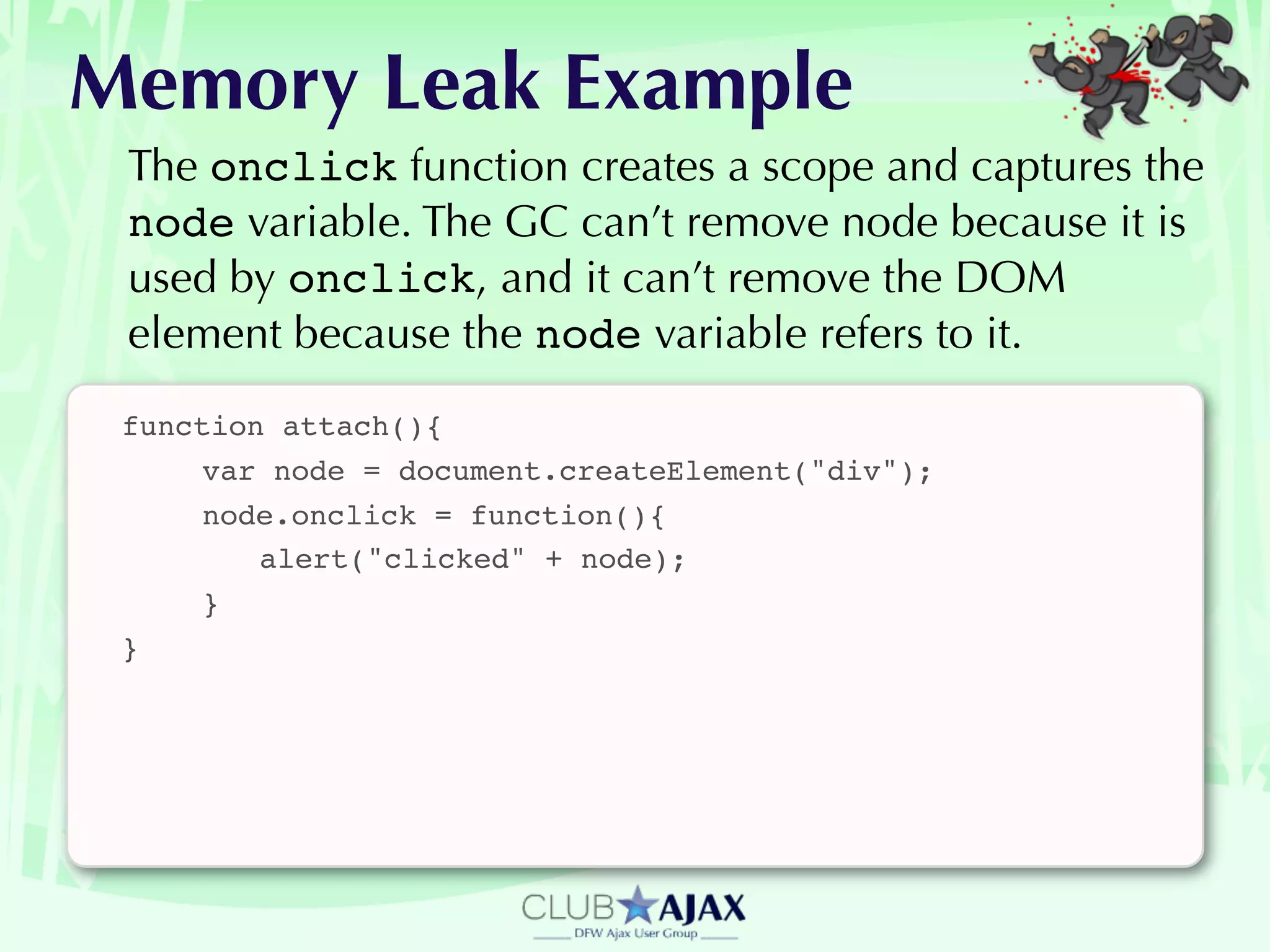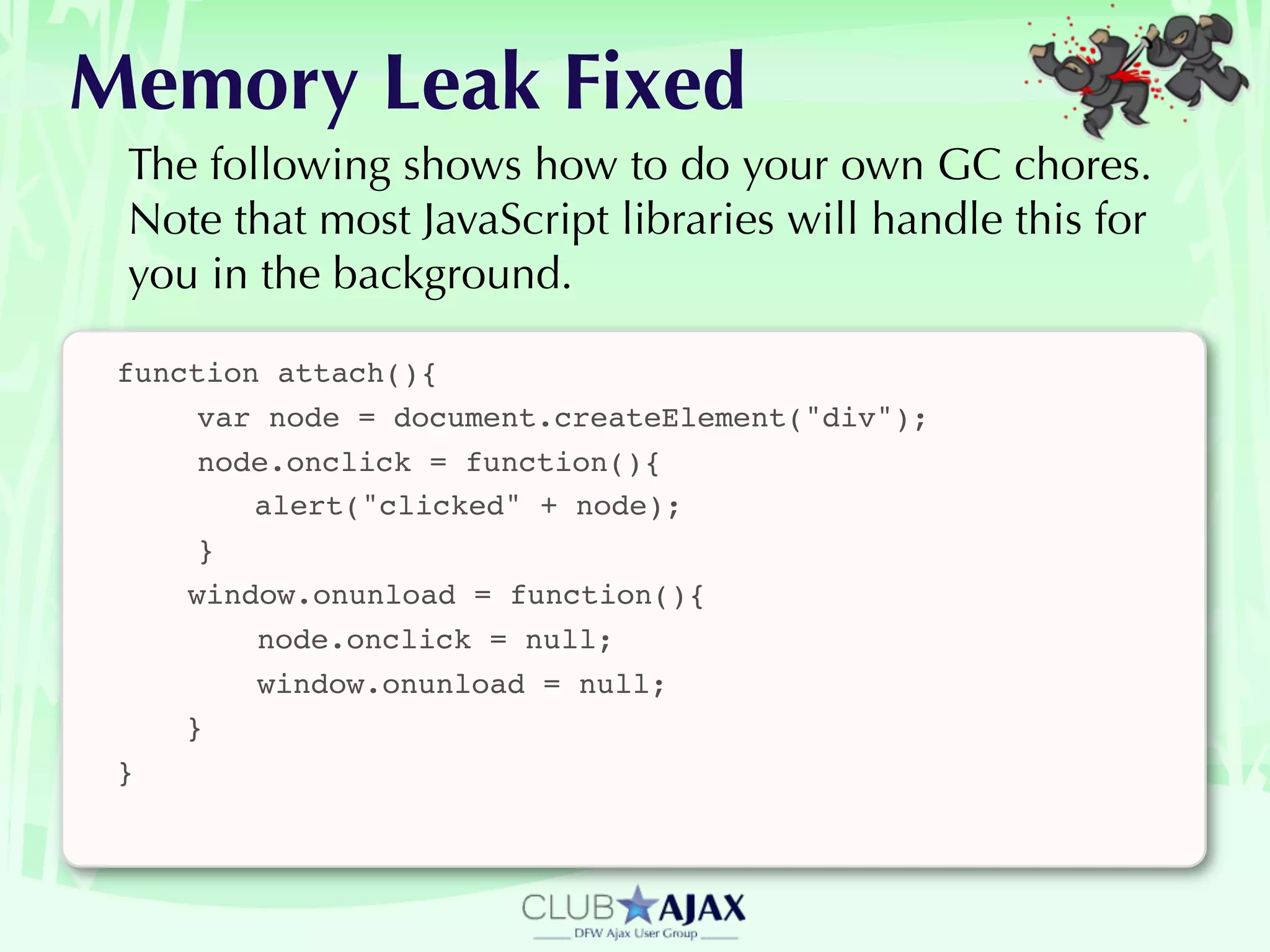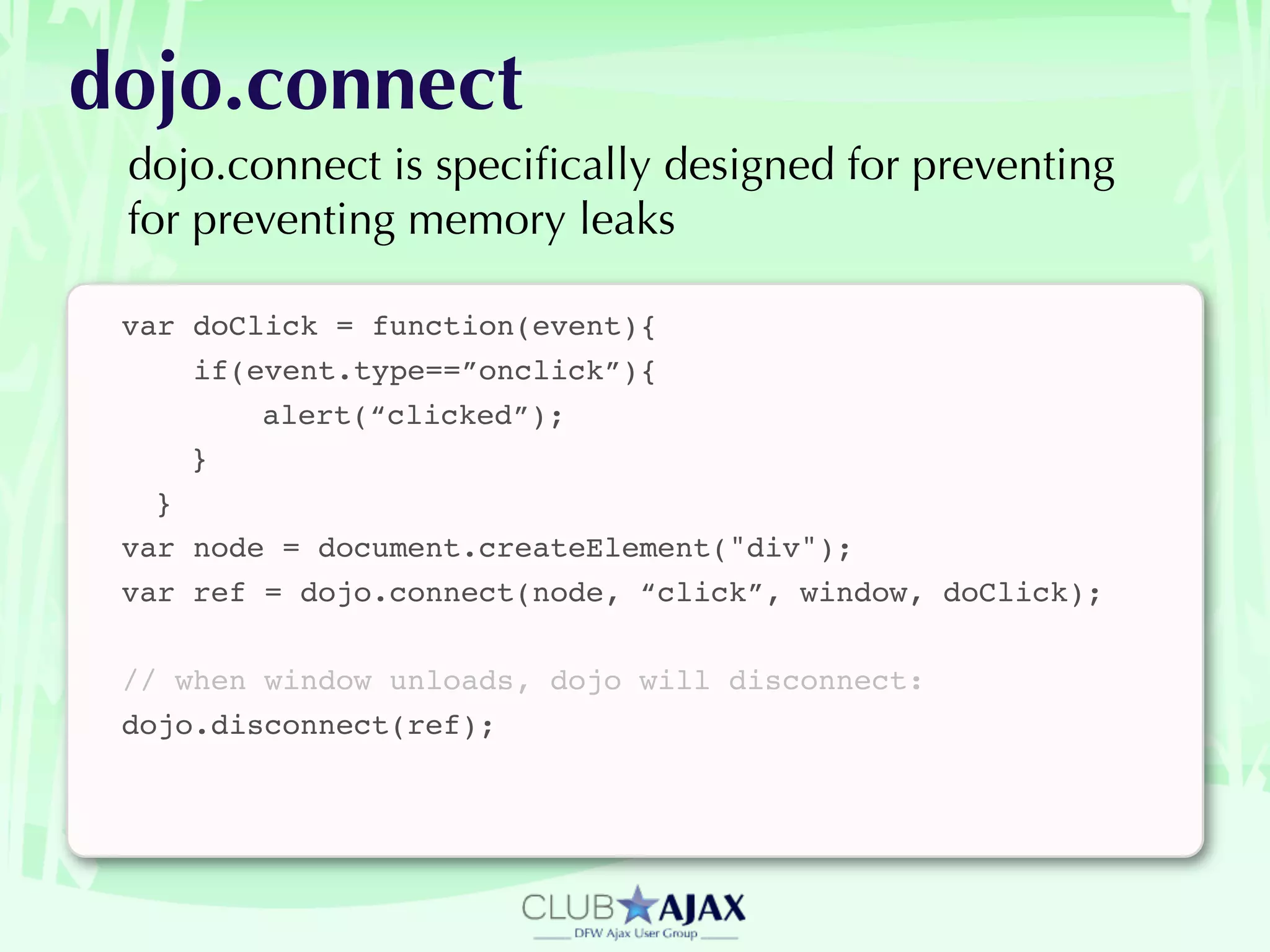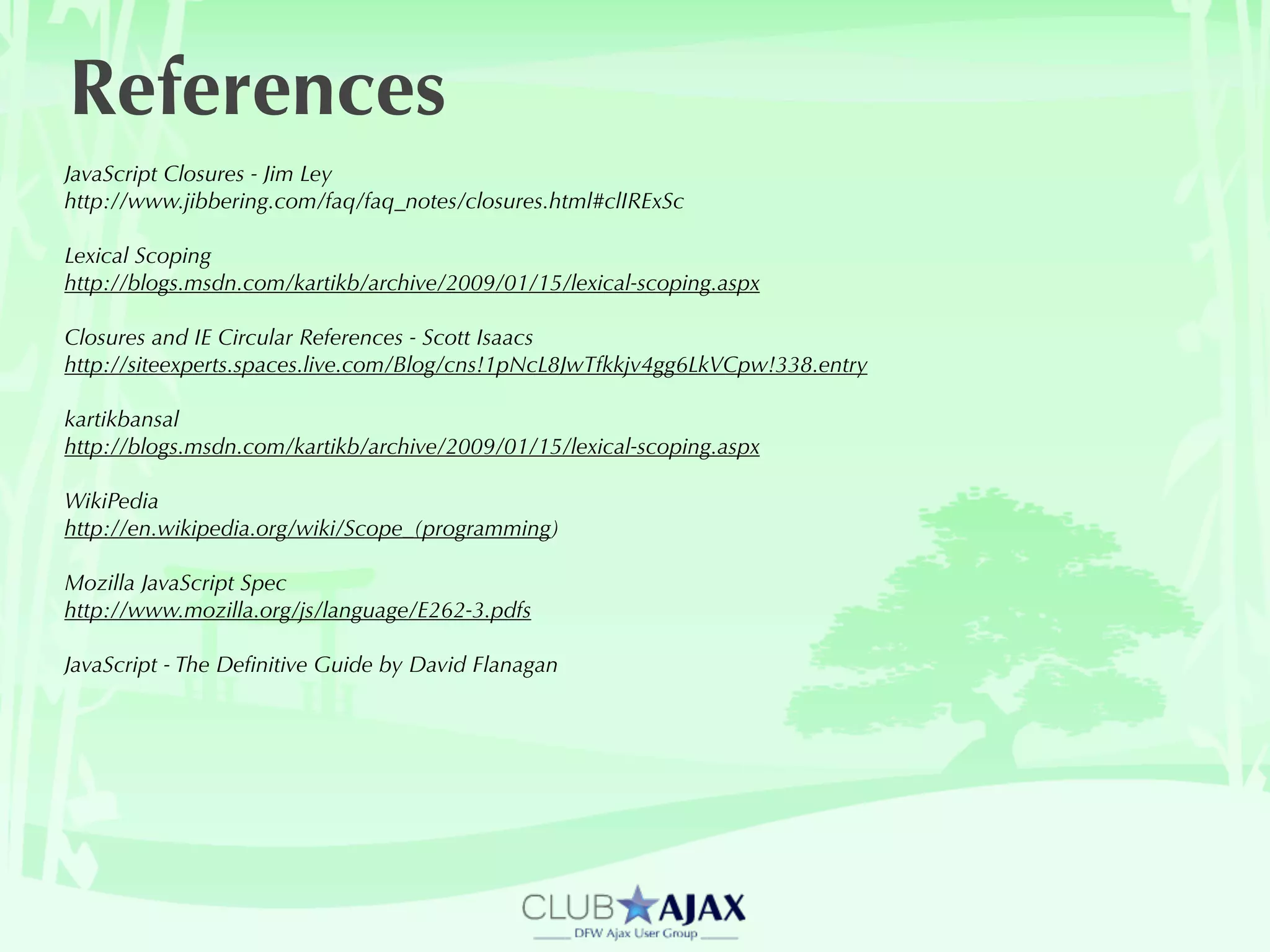The document provides an overview of JavaScript programming concepts including language overview, scope, context, and closures. It discusses that JavaScript objects are mutable and can be extended, and functions are first-class objects that can be assigned to variables or properties. Scope is determined lexically but context refers to the object a method belongs to and is determined at runtime by the "this" keyword. Accidental globals can occur if variables are not declared with "var".
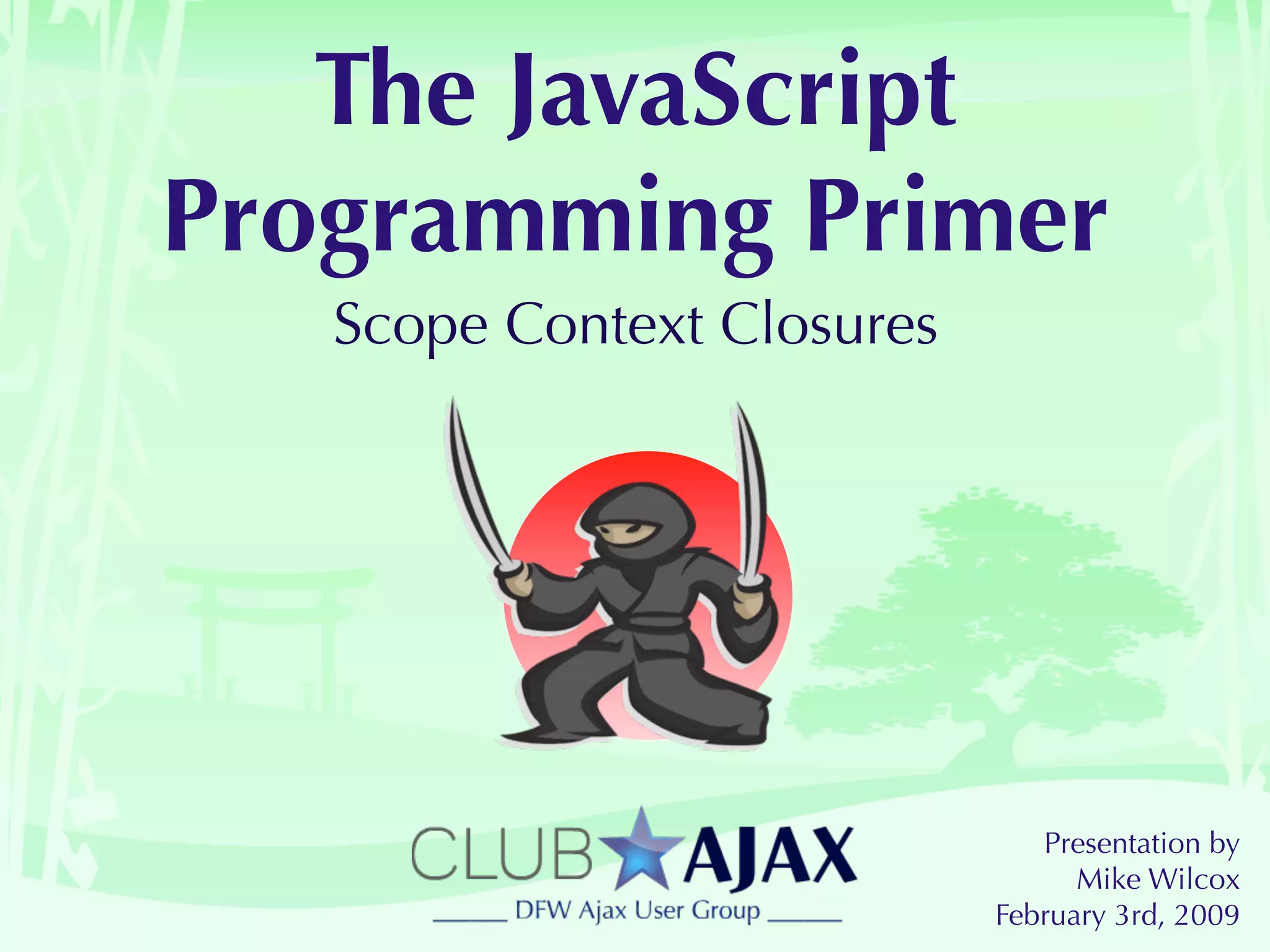
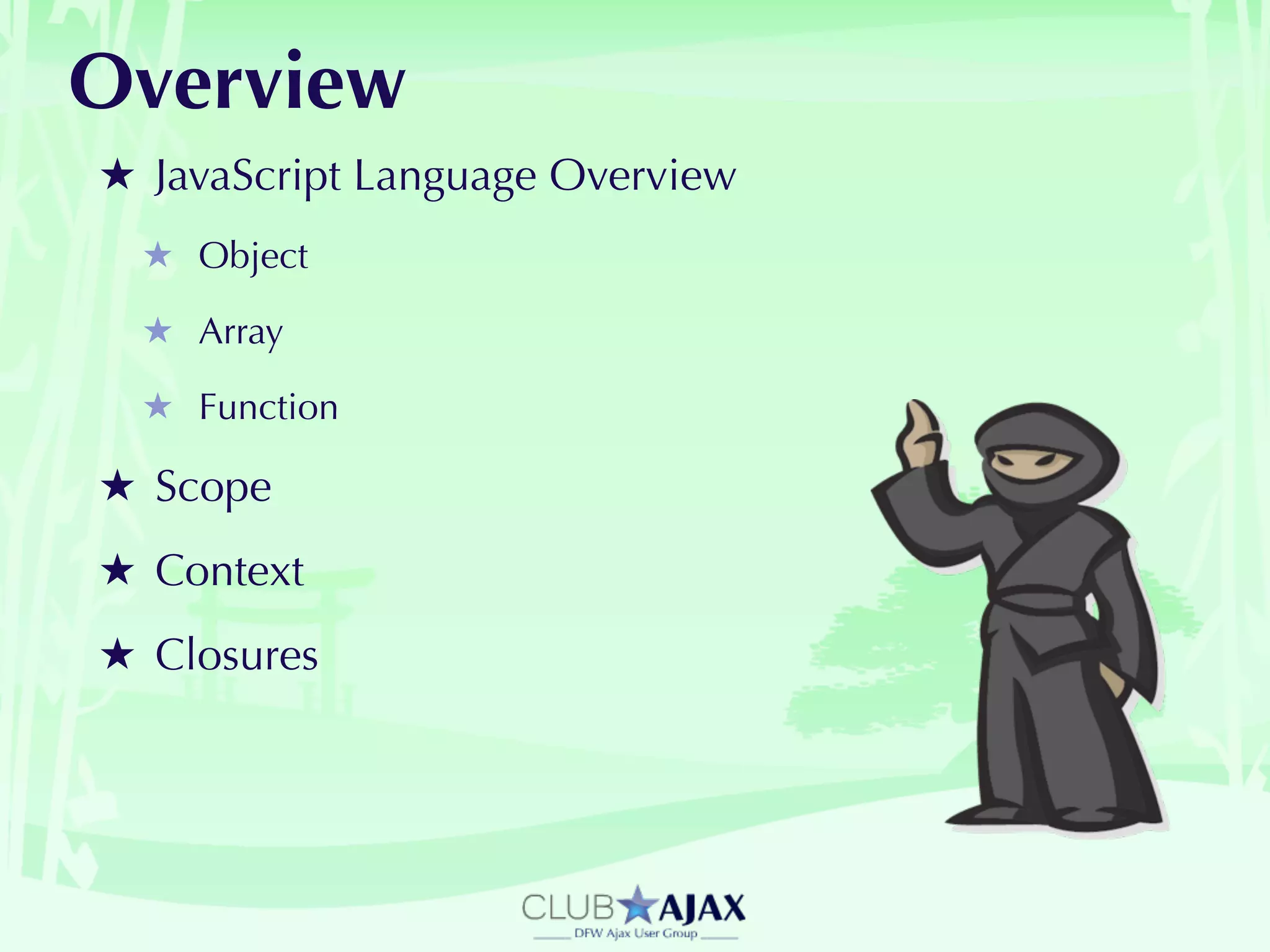
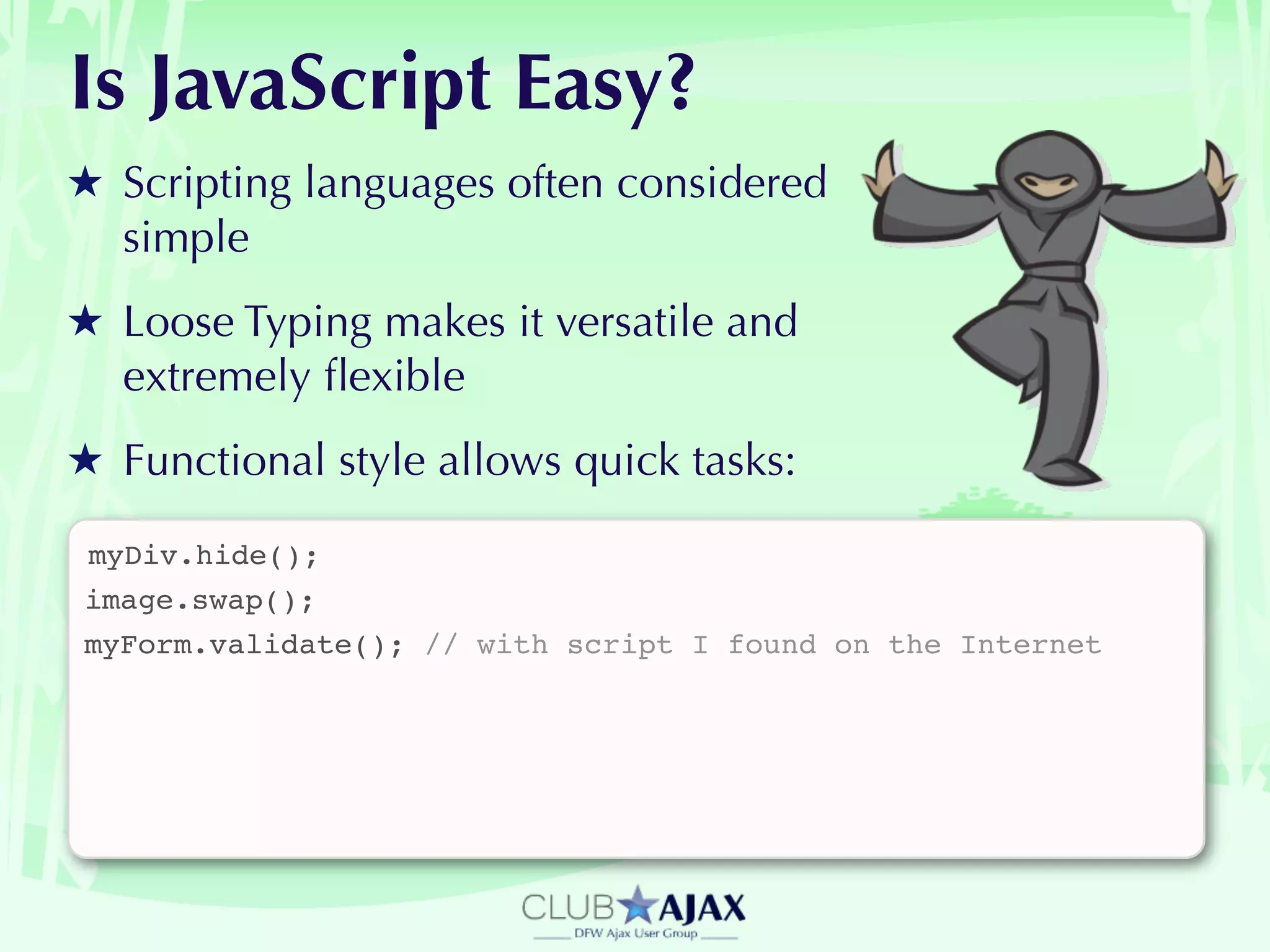
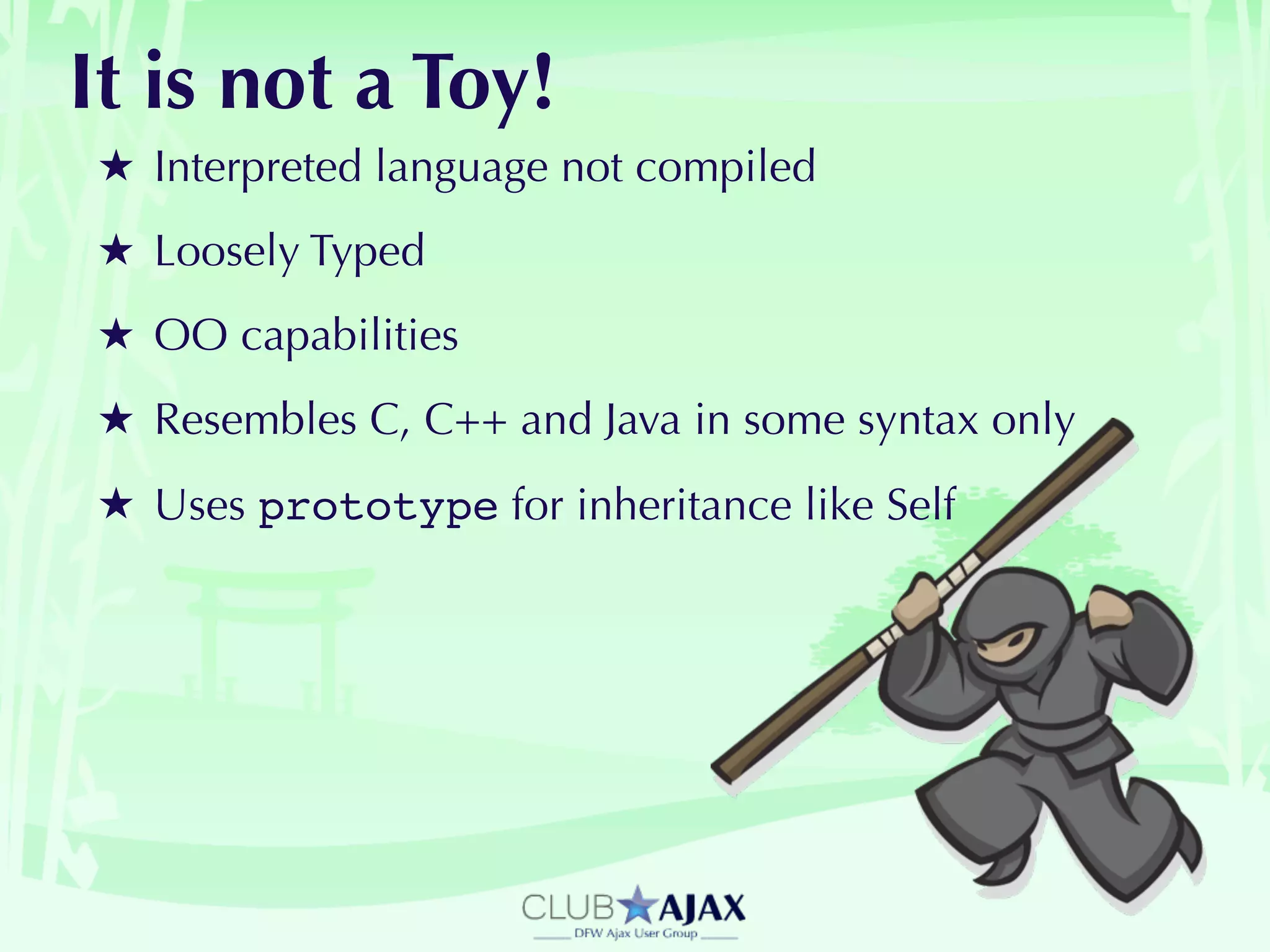
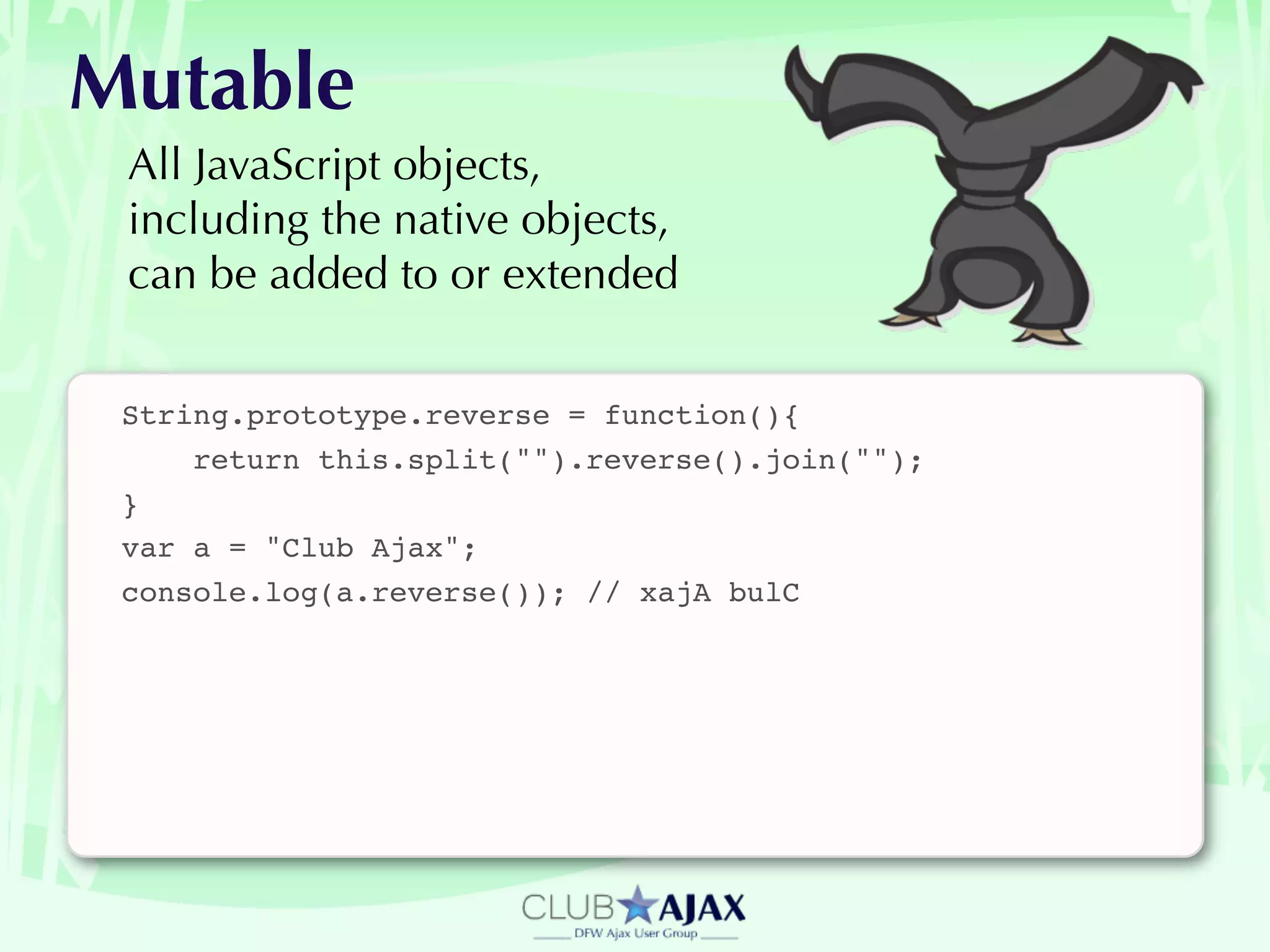
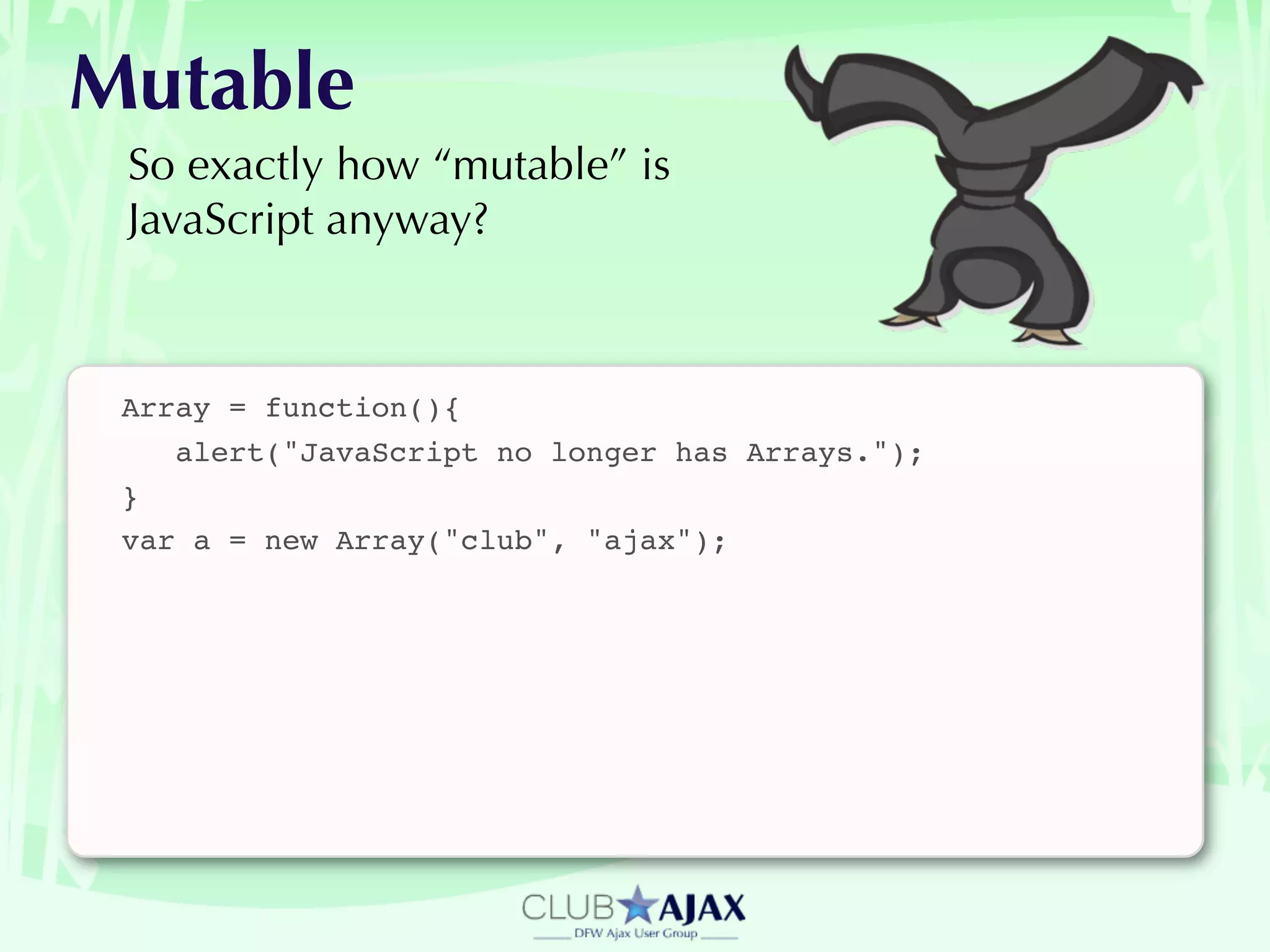
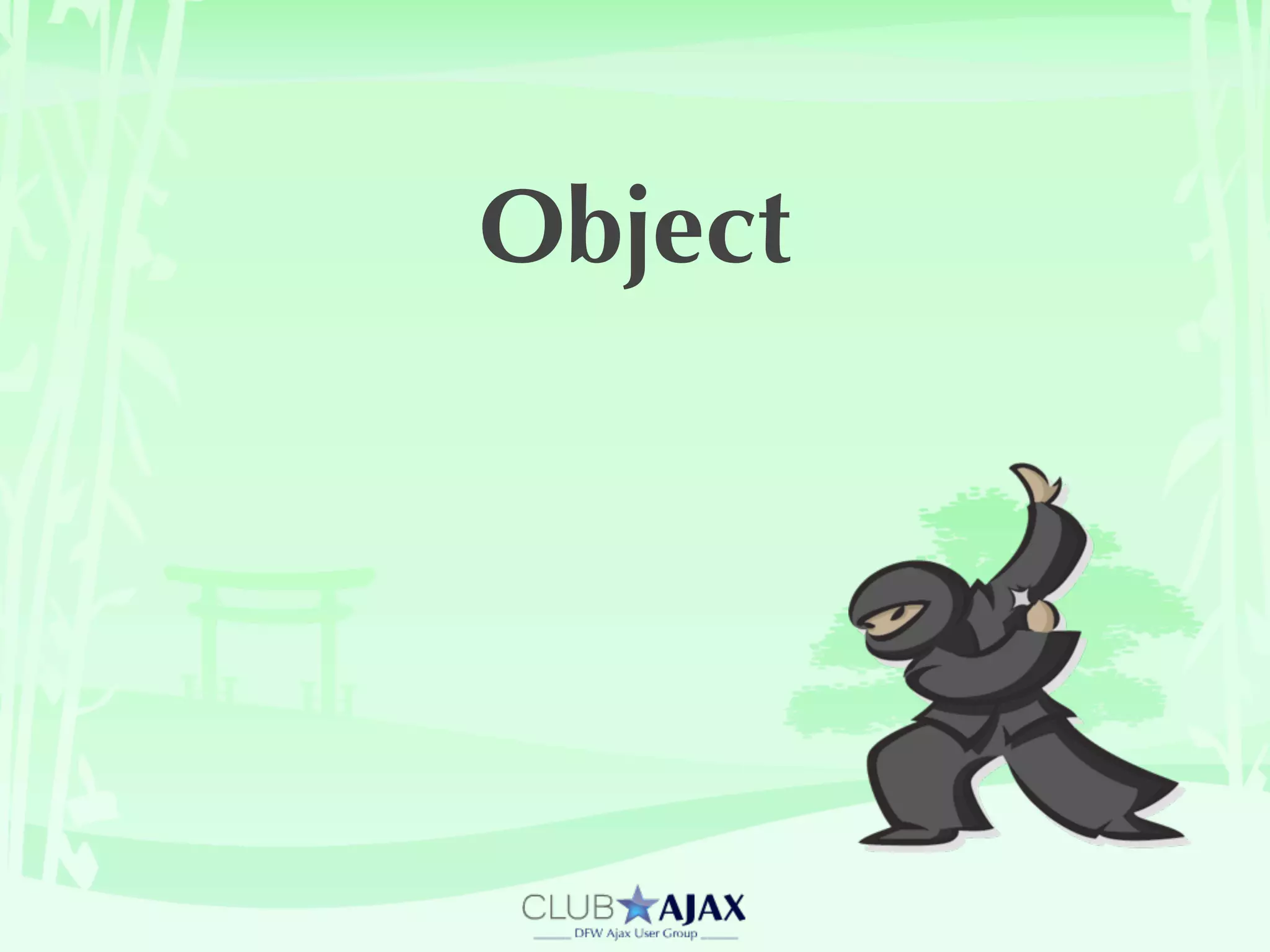
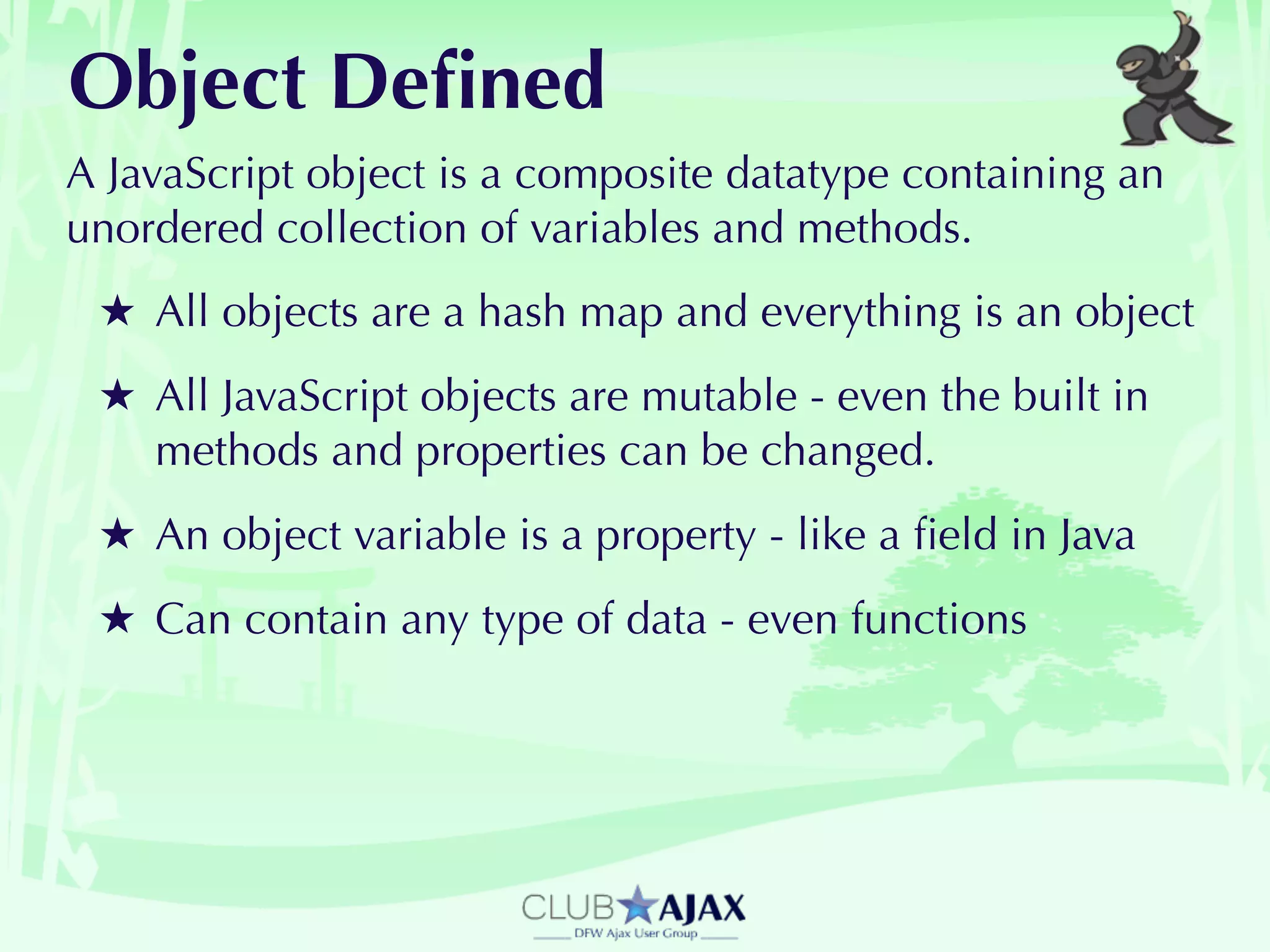
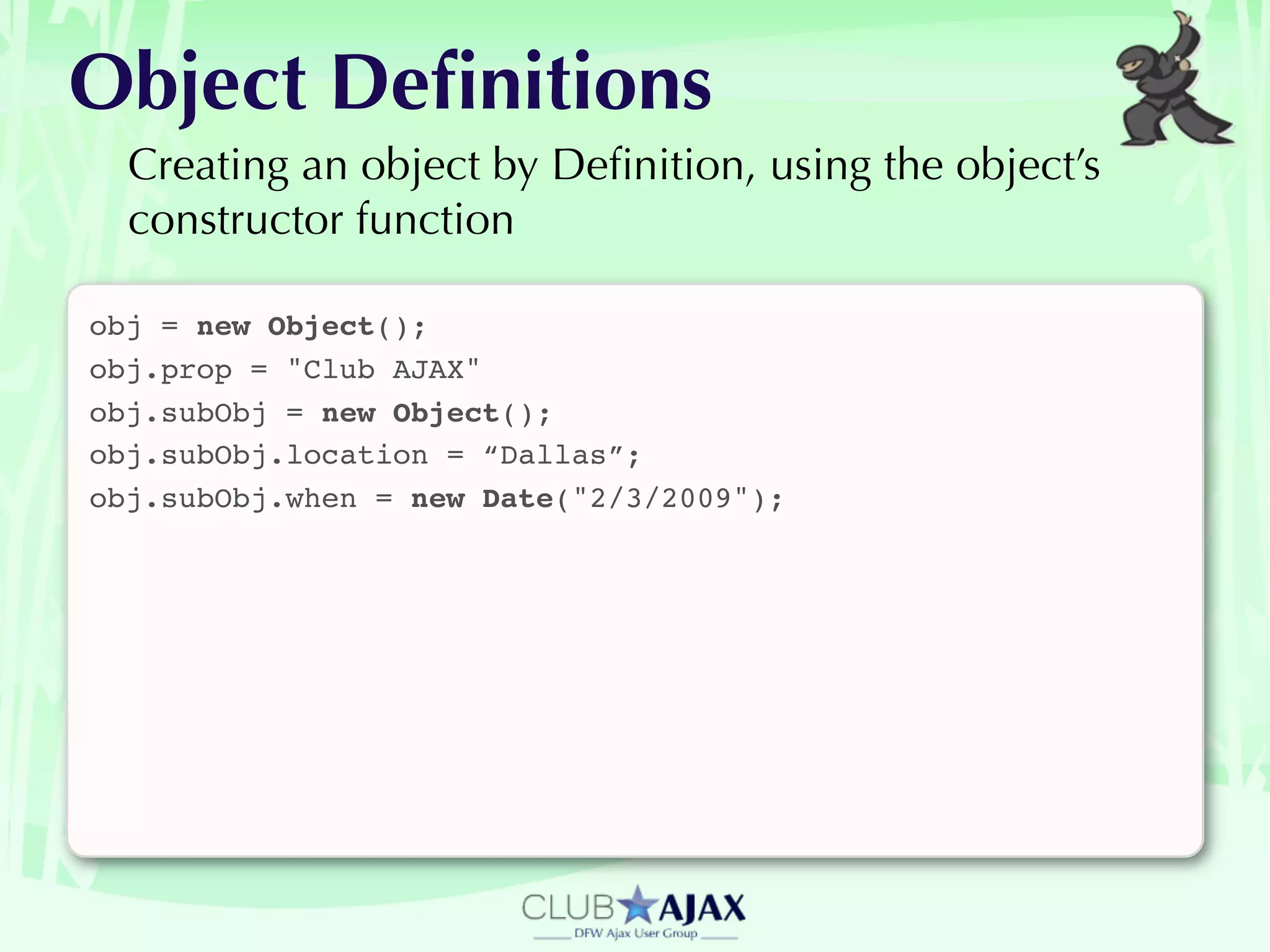
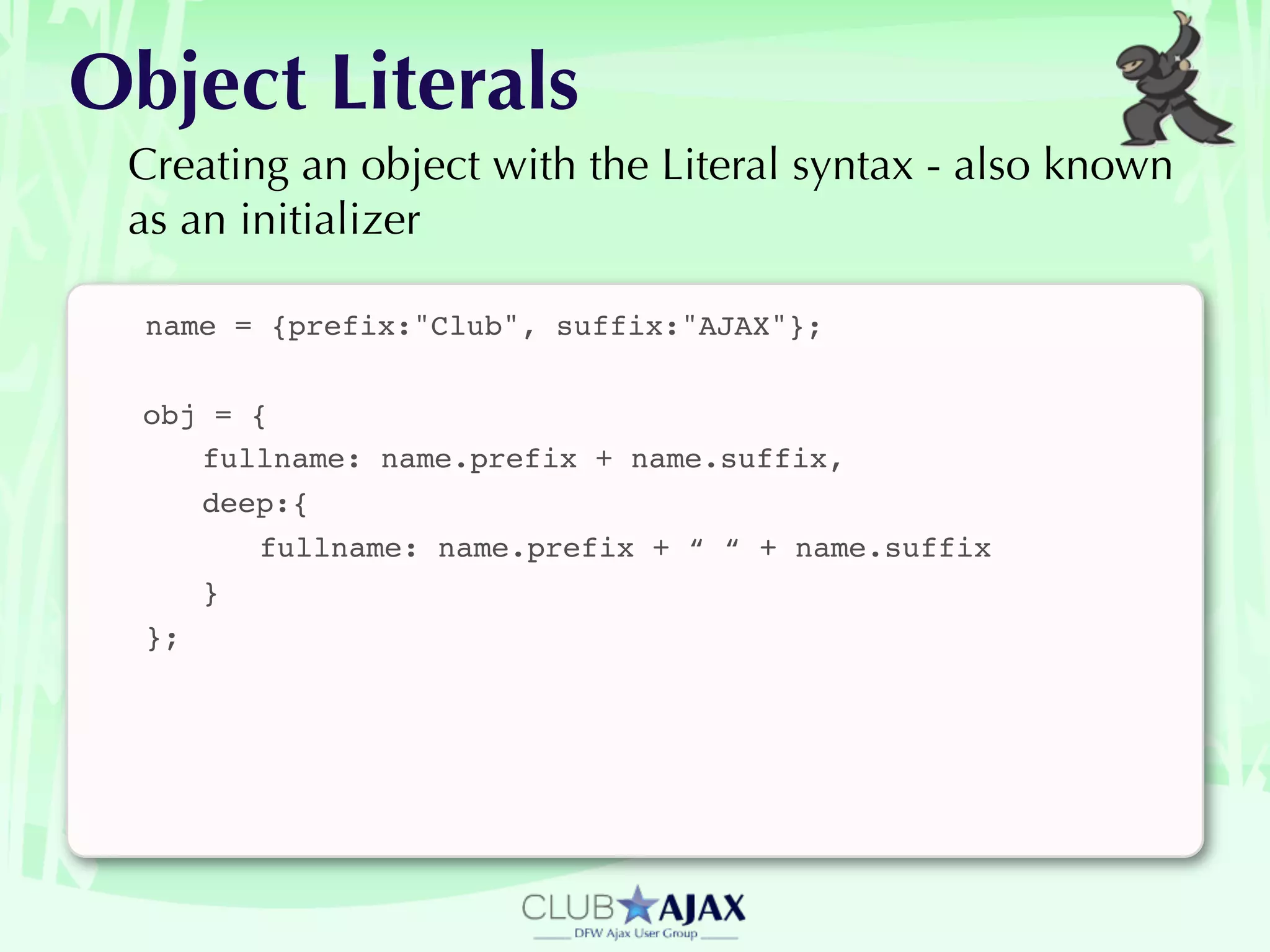
![Object - Value Access
// dot syntax
image.width;
image.height;
obj.myDomElement;
obj.myFunction;
obj.myArray;
// associative array
obj["myDomElement"];
obj["myFunction"];
obj["myArray"];
var i = “myArray”;
obj["myArray"] = obj["my” + ”Array"] = obj[i] = obj.myArray;](https://image.slidesharecdn.com/primer-100327125821-phpapp01/75/The-JavaScript-Programming-Primer-11-2048.jpg)
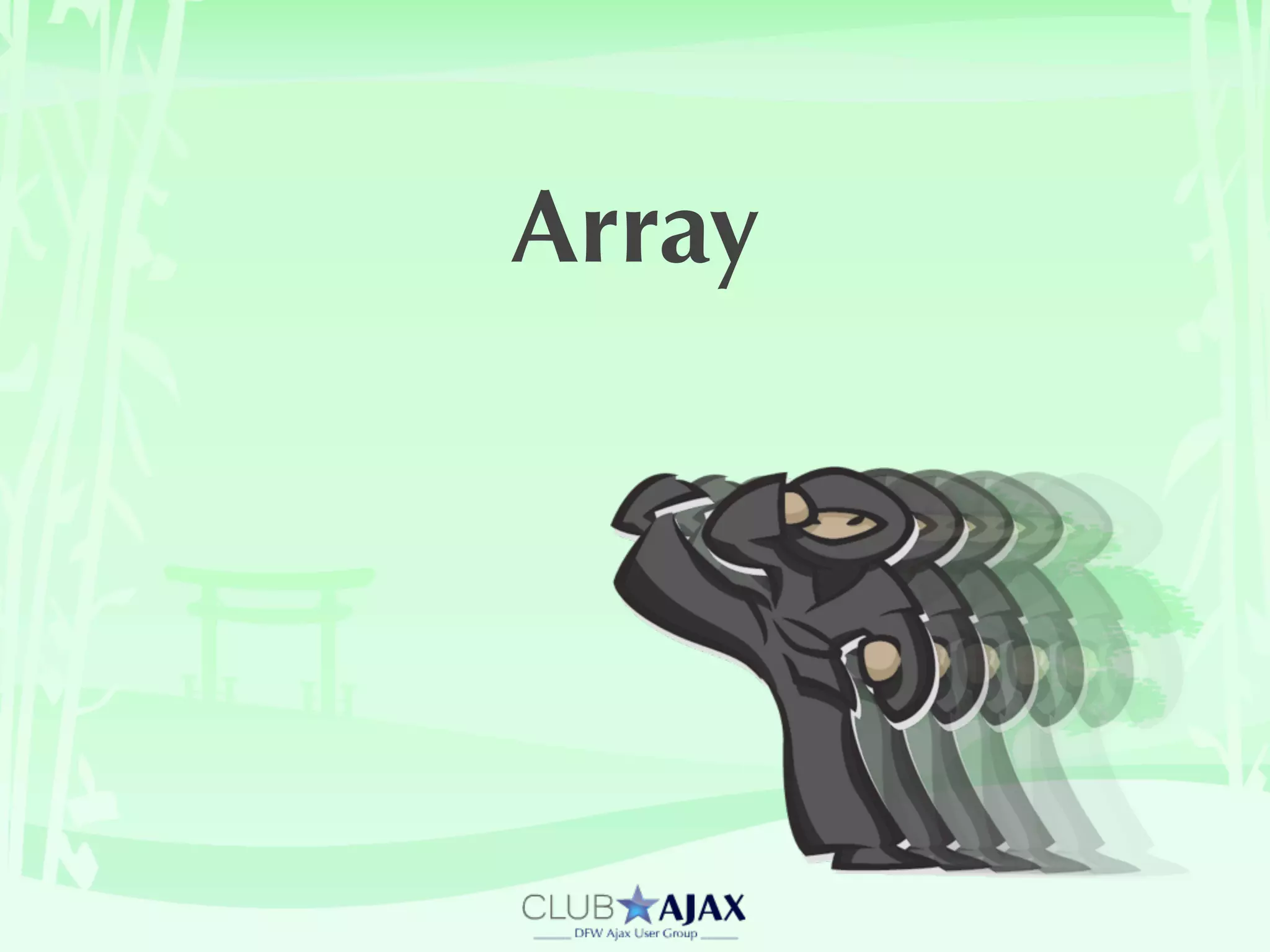
![Array in Brief
★ An untyped, ordered object
★ Has a length property
★ Additional methods: push(), pop(), etc.
// Definition
var a = new Array(10); // sets length
var b = new Array(“club”, “ajax”); // sets array
// Literal
var c = ["club", "ajax"];
c[2] = "rocks";
// Bad form!
myArray["prop"] = "associative"; // works but unexpected](https://image.slidesharecdn.com/primer-100327125821-phpapp01/75/The-JavaScript-Programming-Primer-13-2048.jpg)
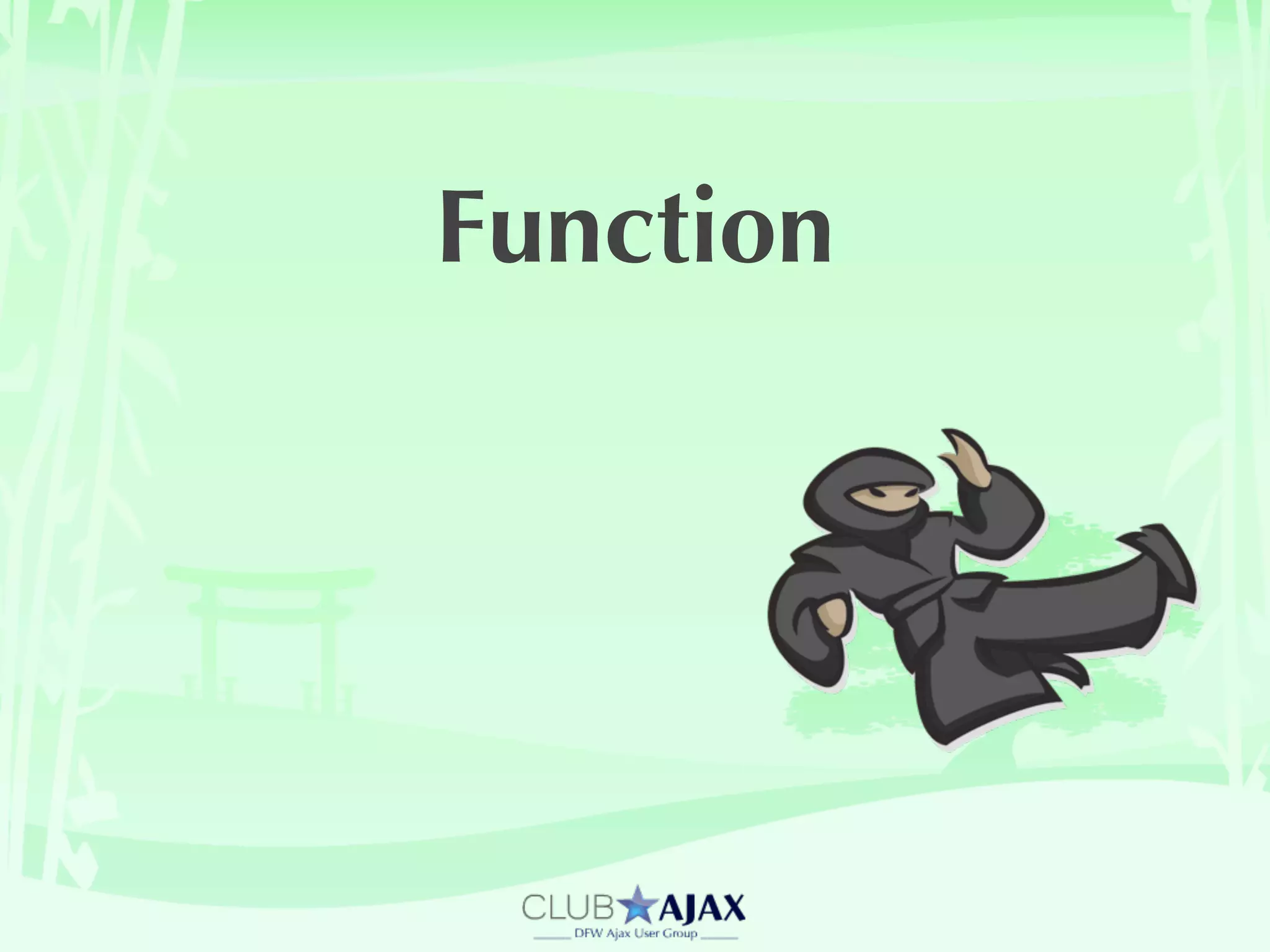
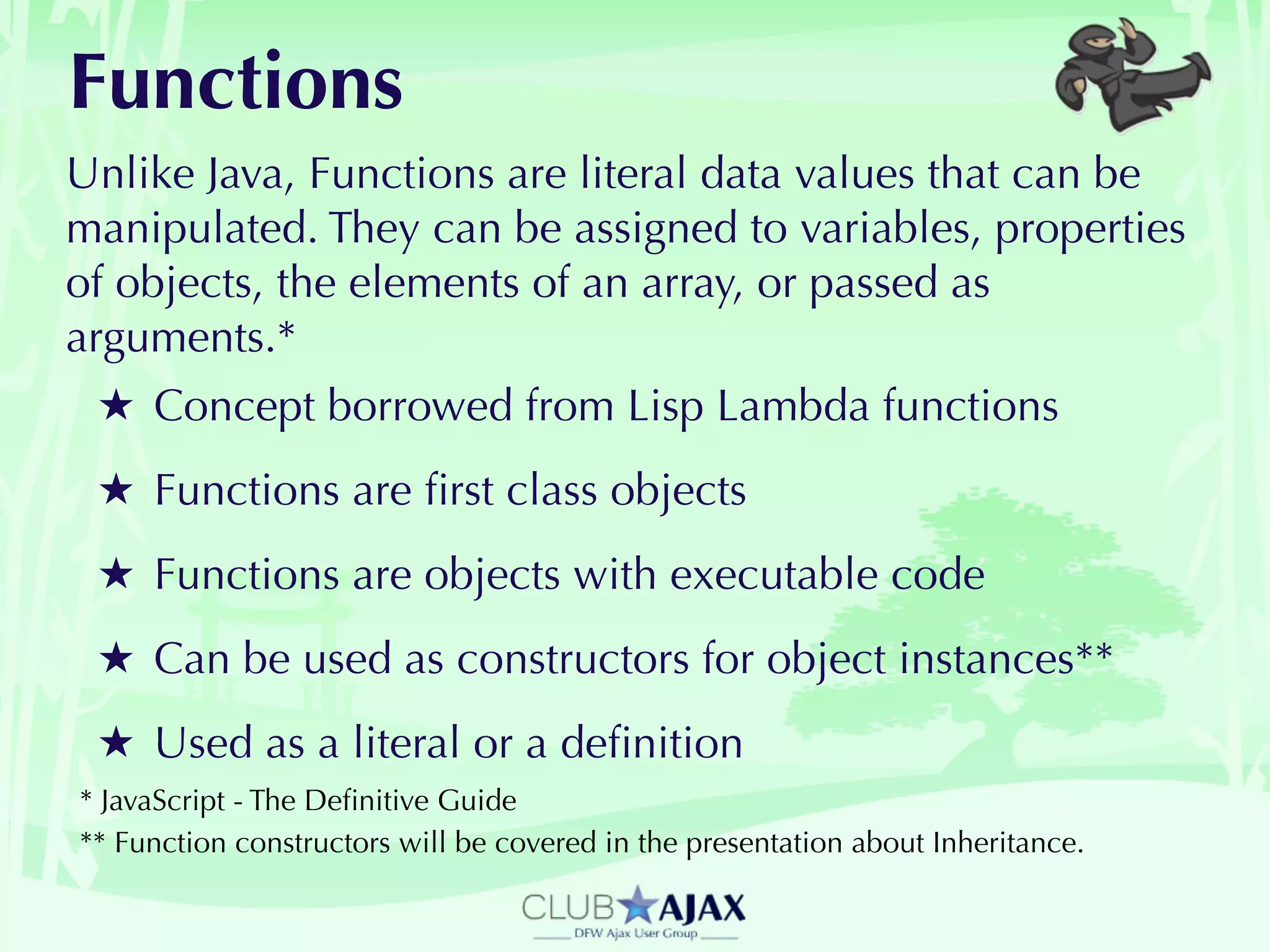
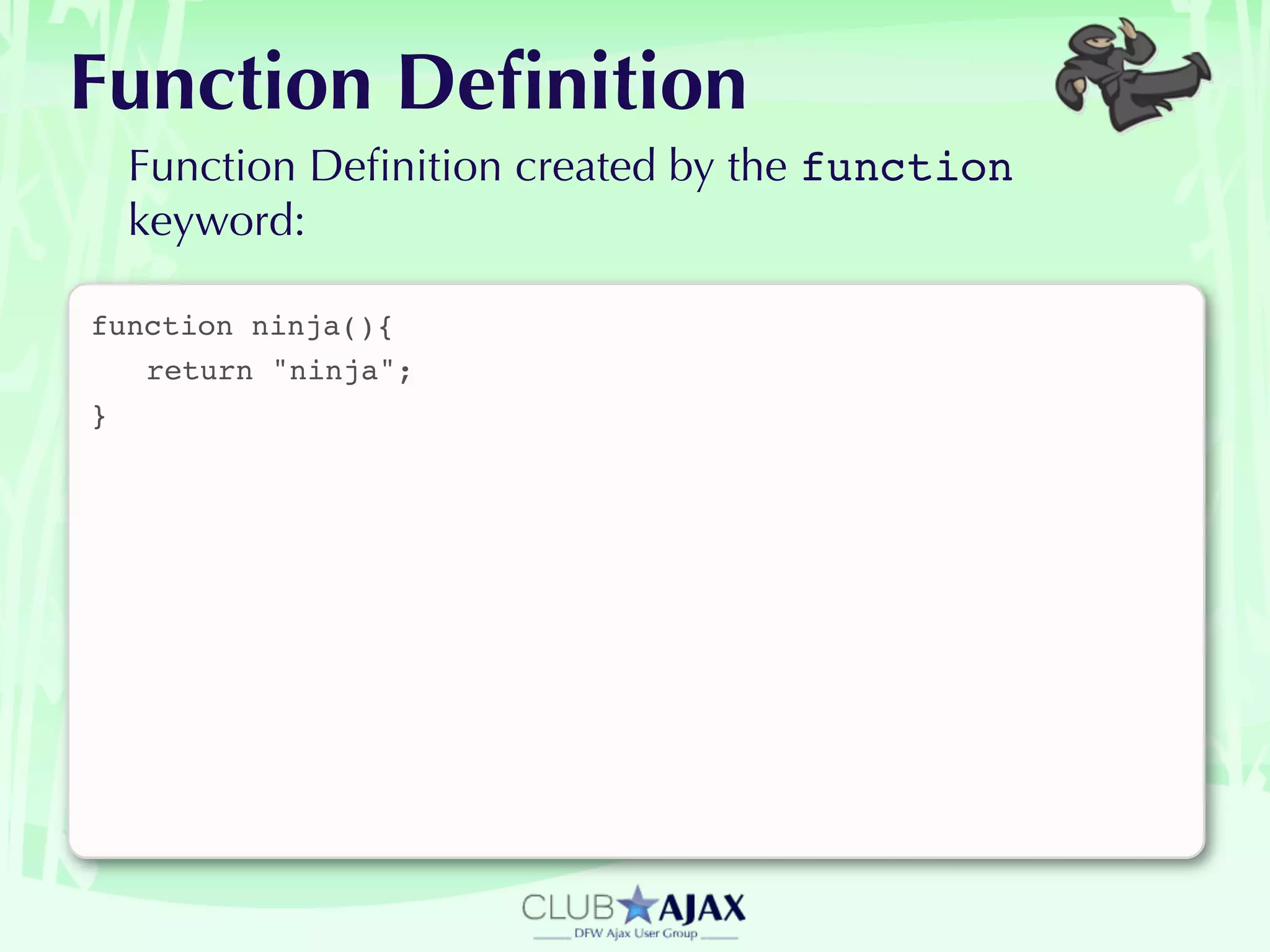
![Function Literal
★ An expression that defines an unnamed function
★ Also called Function Statement or an Anonymous
Function or a Function Expression
★ Much more flexible than Definitions, as they can used
once and need not be named*
// Unnamed Function assigned to "foo":
f[0] = function(x){ return x * x;}
myArray.sort(function(a,b){ return a<b; });
var squared = (function(n){ return n*n })(num);
*JavaScript the Definitive Guide](https://image.slidesharecdn.com/primer-100327125821-phpapp01/75/The-JavaScript-Programming-Primer-17-2048.jpg)
![Function Literal Usage
// Stored as a variable:
ar[1] = function(x){ return x * x; }
ar[1](2); // 4
// Passed as an argument:
var add = function( a, b ){
return a() + b();
}
add(function(){ return 1; }, function(){ return 2; }); // 3
// Invoked Directly:
var foo = (function(){ return "bar"; })();
// foo = "bar", the result of the invoked function,
// not the function itself](https://image.slidesharecdn.com/primer-100327125821-phpapp01/75/The-JavaScript-Programming-Primer-18-2048.jpg)
